History of Art & Interior Design - Part 7 - Filipino Art
1/121
There's no tags or description
Looks like no tags are added yet.
Name | Mastery | Learn | Test | Matching | Spaced |
|---|
No study sessions yet.
122 Terms
pottery
any product that is obtained through the action of fire upon any material
Manunggul Jar
found in the Tabon caves of Palawan; a funerary vessel with incised designs around its body; its cover has a boat containing two figures to symbolize the prehistoric Filipino's journey to the afterlife

burnay
Ilocano native term for large earthenware, mainly used for fermentation and storage of liquid.
tapayan
Southern Tagalog term for a water container for the kitchen
palayok
cookware
banga
storage of drinking water
Vigan tiles
Red, high-polished tiles associated with the Spanish Colonial houses in Vigan
T'nalak
A weaving tradition of the T'boli people of South Cotabato, Philippines.
woven from abaca fibers
dream weavers
Ikat
A style of weaving that uses a resist dyeing process similar to tie-dye on either the warp or weft before the threads are woven to create a pattern or design.
characterized by diamond stripes of white and red stripes; known for its colors and striking design patterns
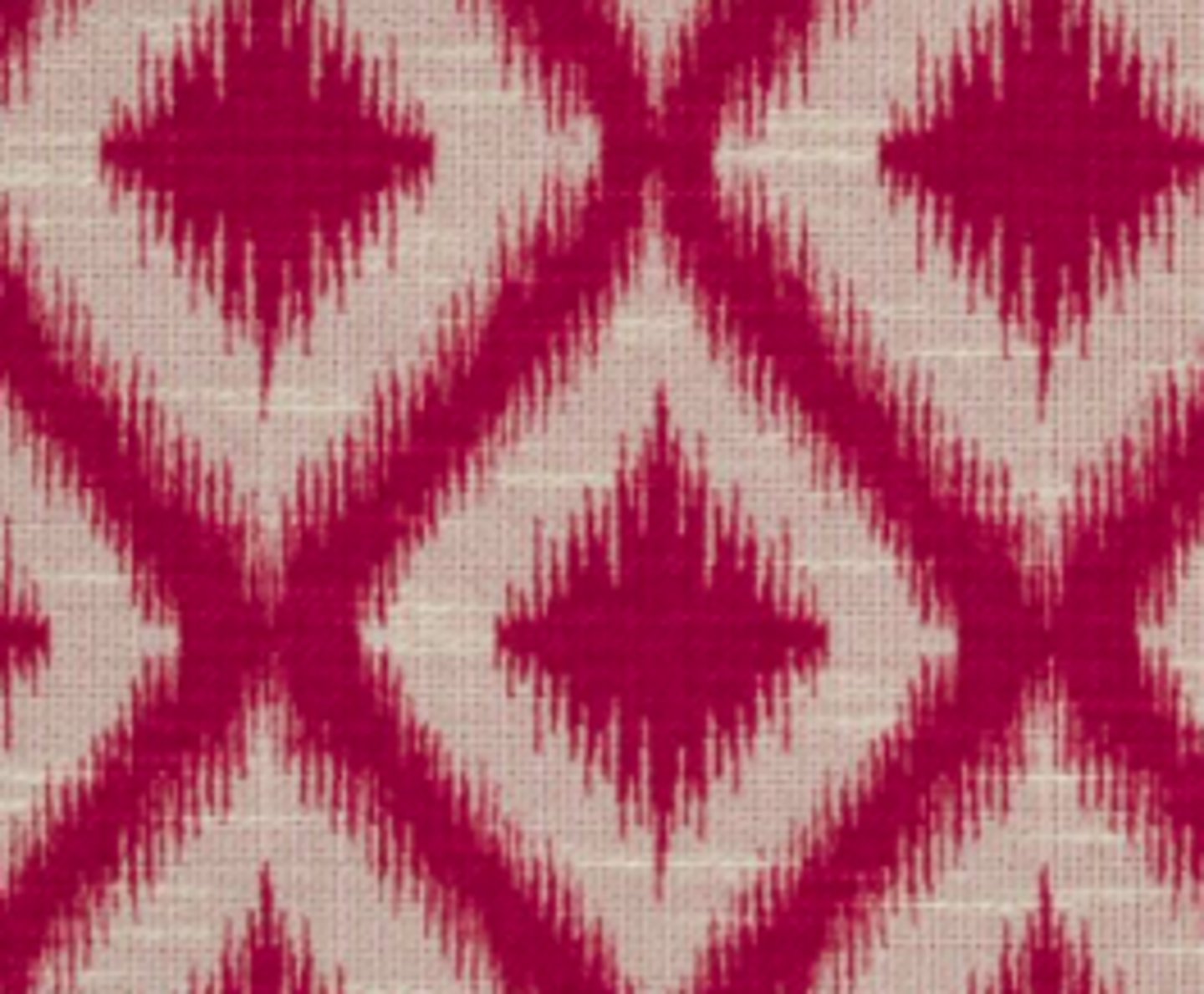
Binacol
also known as binakel. binakael, or binakol. binakul
means "twill" in Ilocano
variation of the abel; recognized by its uniform, interlocked geometric patterns that result in psychedelic optical art designs, which are said to represent the waves of the sea, and, among indigenous people of the Cordilleras, protection against malevolent spirits

Inabel/Abel
Iloco woven fabric of cotton yarns with floral design; a handwoven textile created by incredible artisans of the northern provinces of the Philippines using age-old traditional weaving techniques
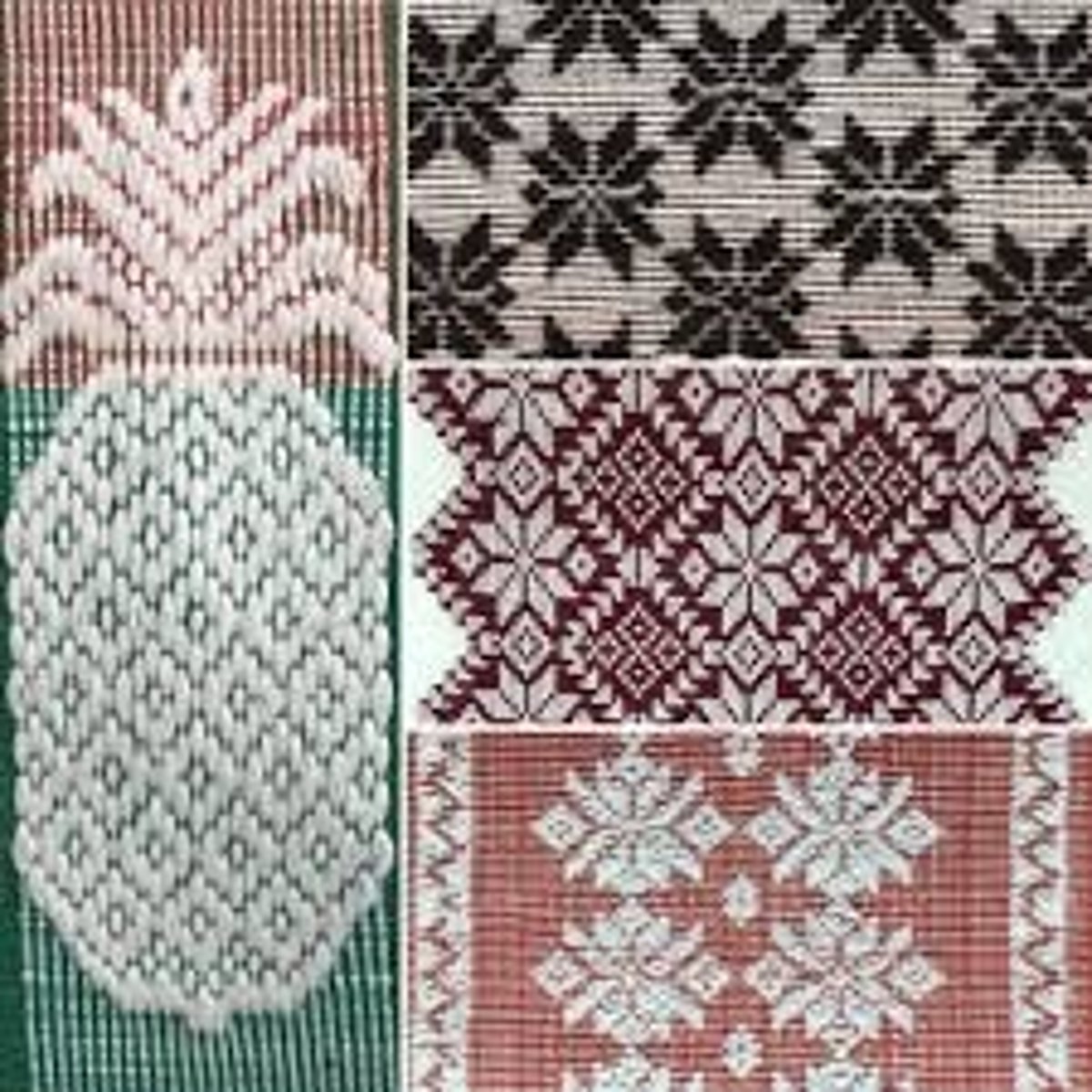
Inaul
Yakan people are recognized for their remarkable technicolor geometric weaves
malong is an example of inaul
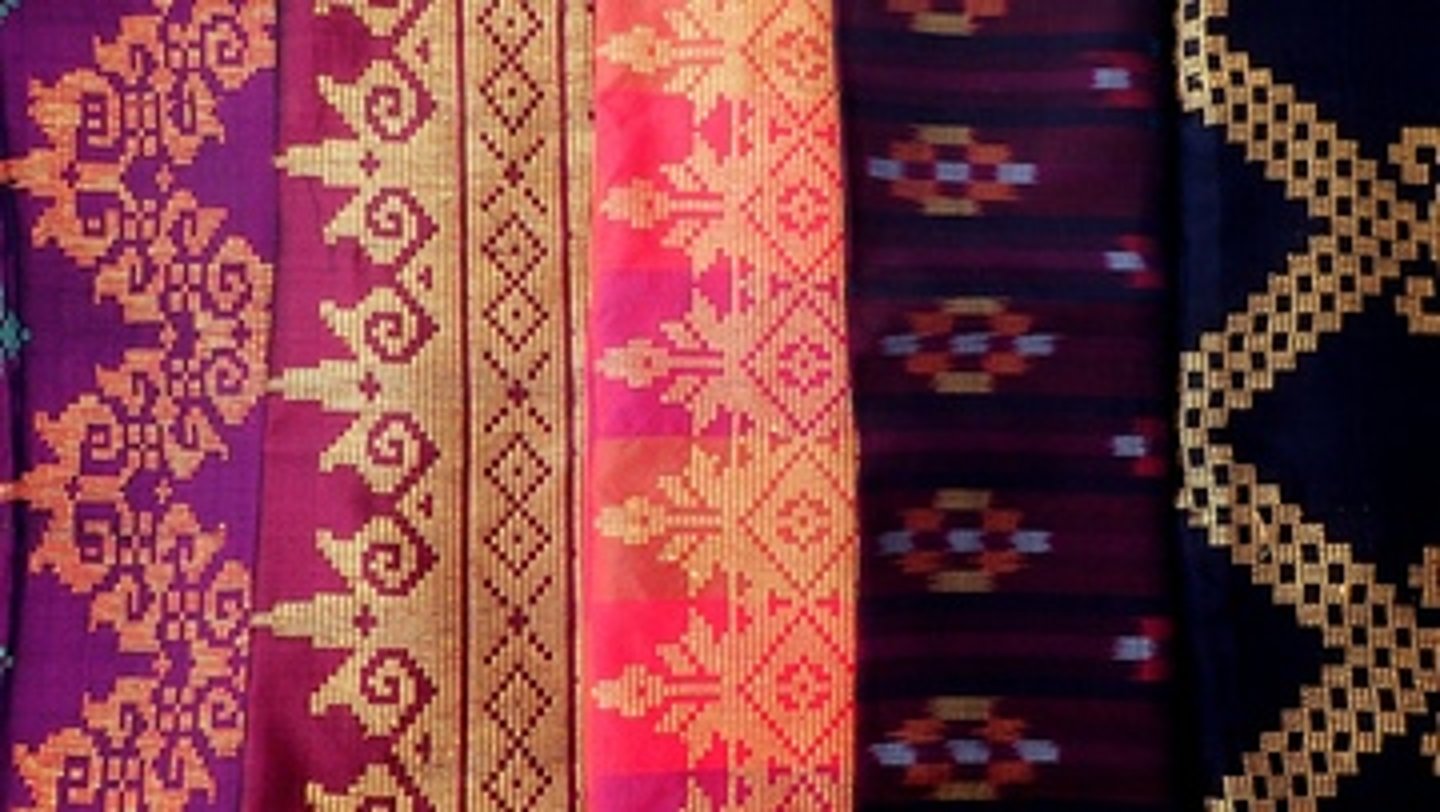
pis siyabit
a handwoven cloth made of silk and cotton and square in form with geometric patterns; a multipurpose headdress
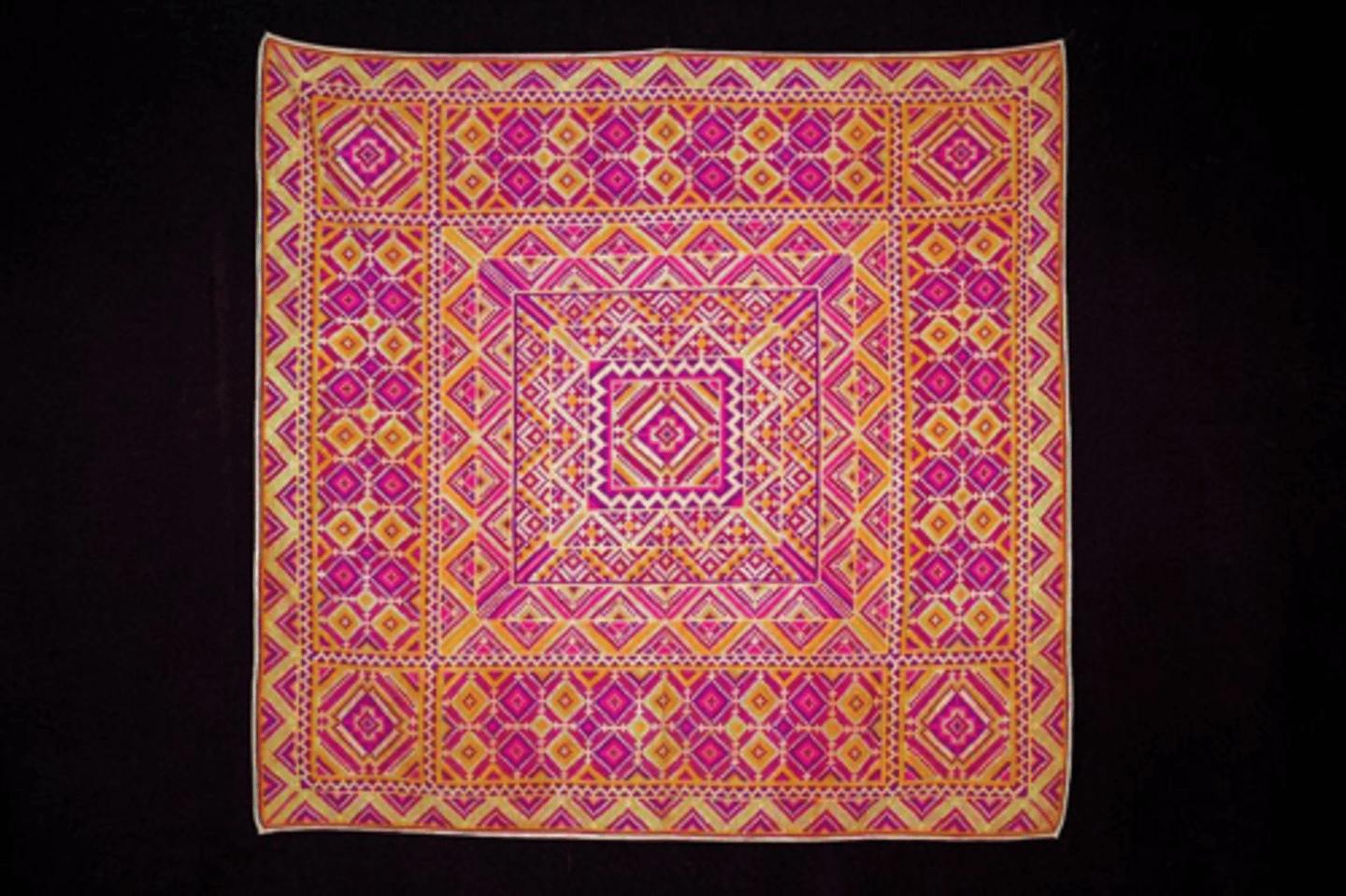
basketry
the process of making a basket which is a receptacle made of interwoven fibrous material
ling-ling-O
Ifugao fertility jewelry used as a necklace pendant or earring, often as a wedding gift
gadur
Maranao ceremonial vessel for wedding gifts (dowry)
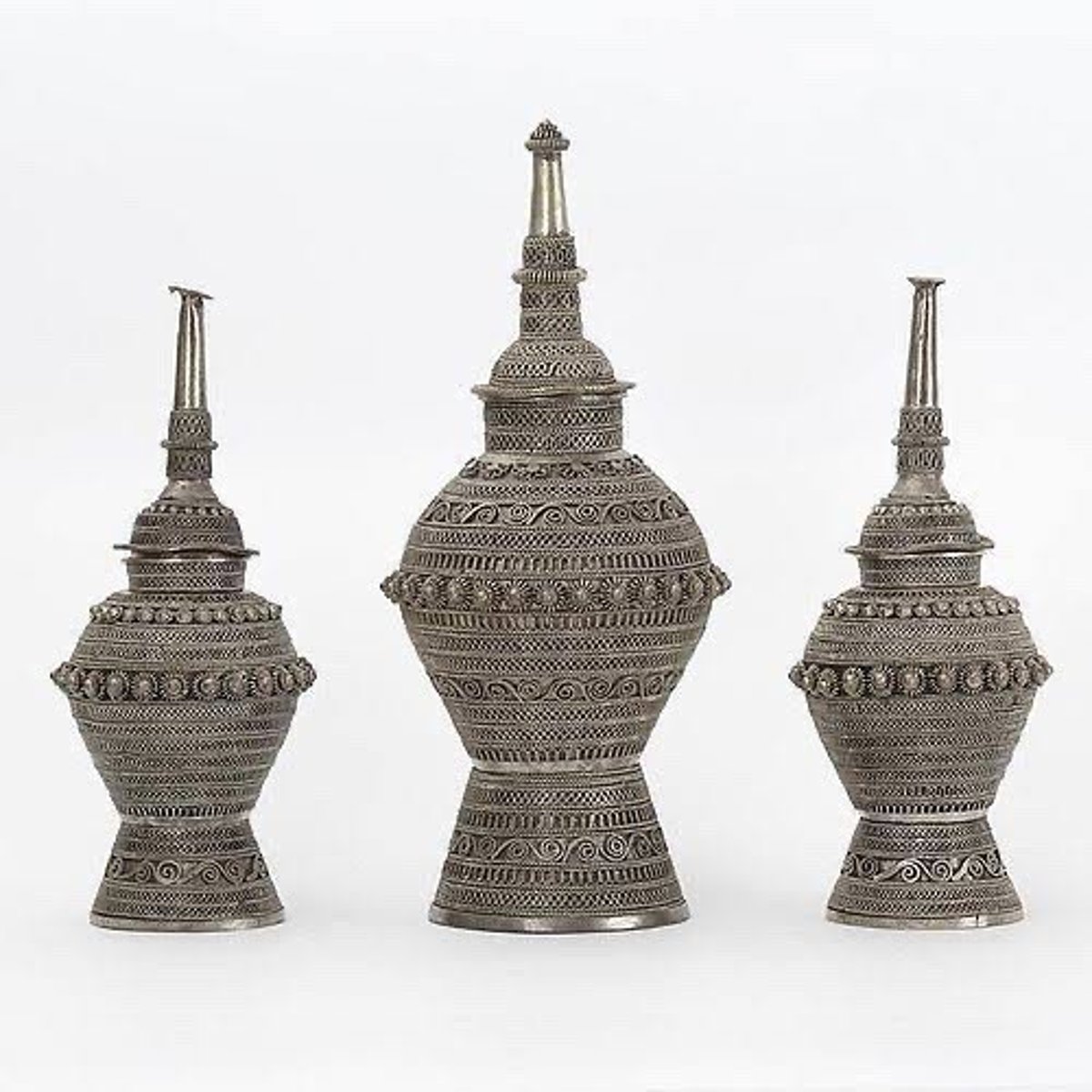
galang
Traditional brass or bronze vessel

lotoan
Betel nut containers

Bulul
Ifugao wood carving of their rice god
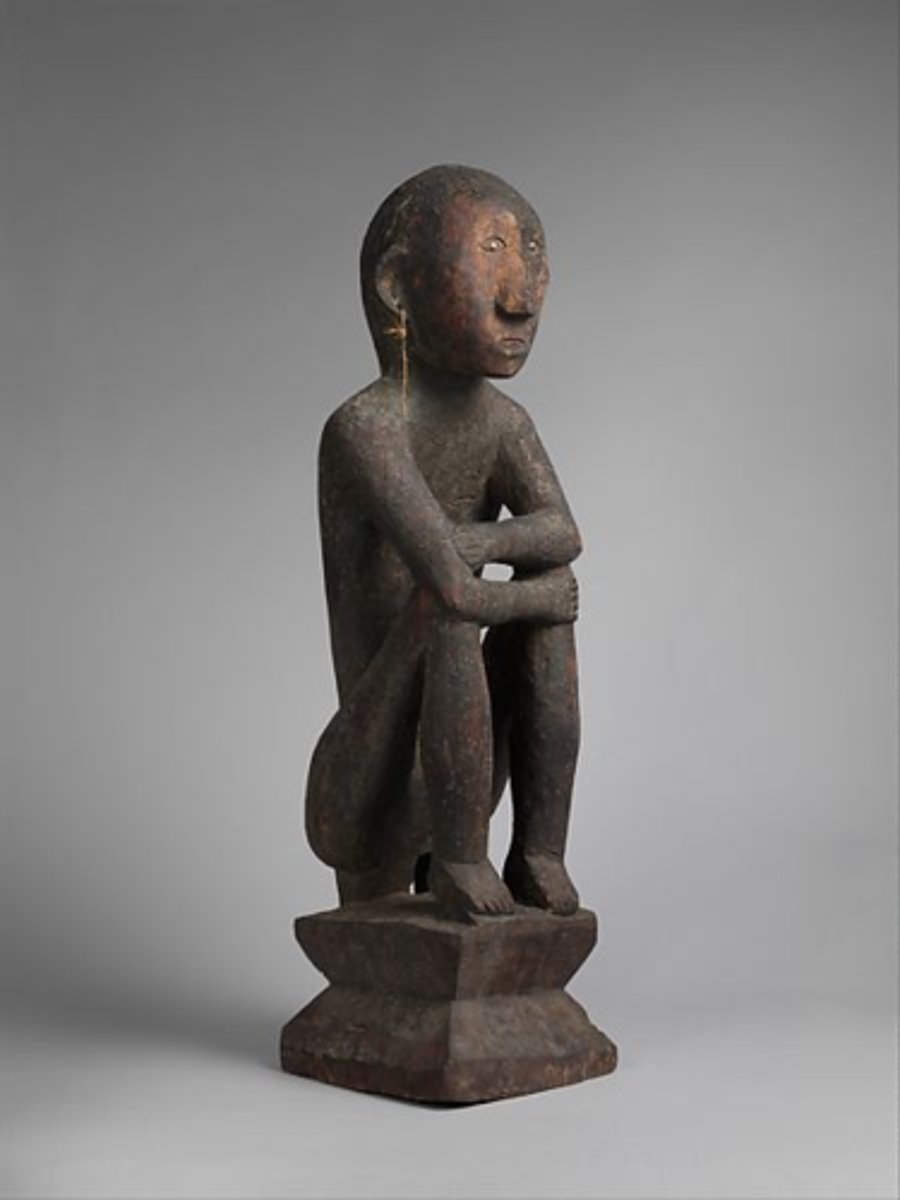
Kinib-bigat/kinabagat
Central post/king post in an ifugao house of the same carved human figure as the bulul

Hagabi
Ifugao wooden bench with a slightly arched midsection, ultimate symbol and proof of owners economic and political power

binabuy
Ifugao pig sculptures
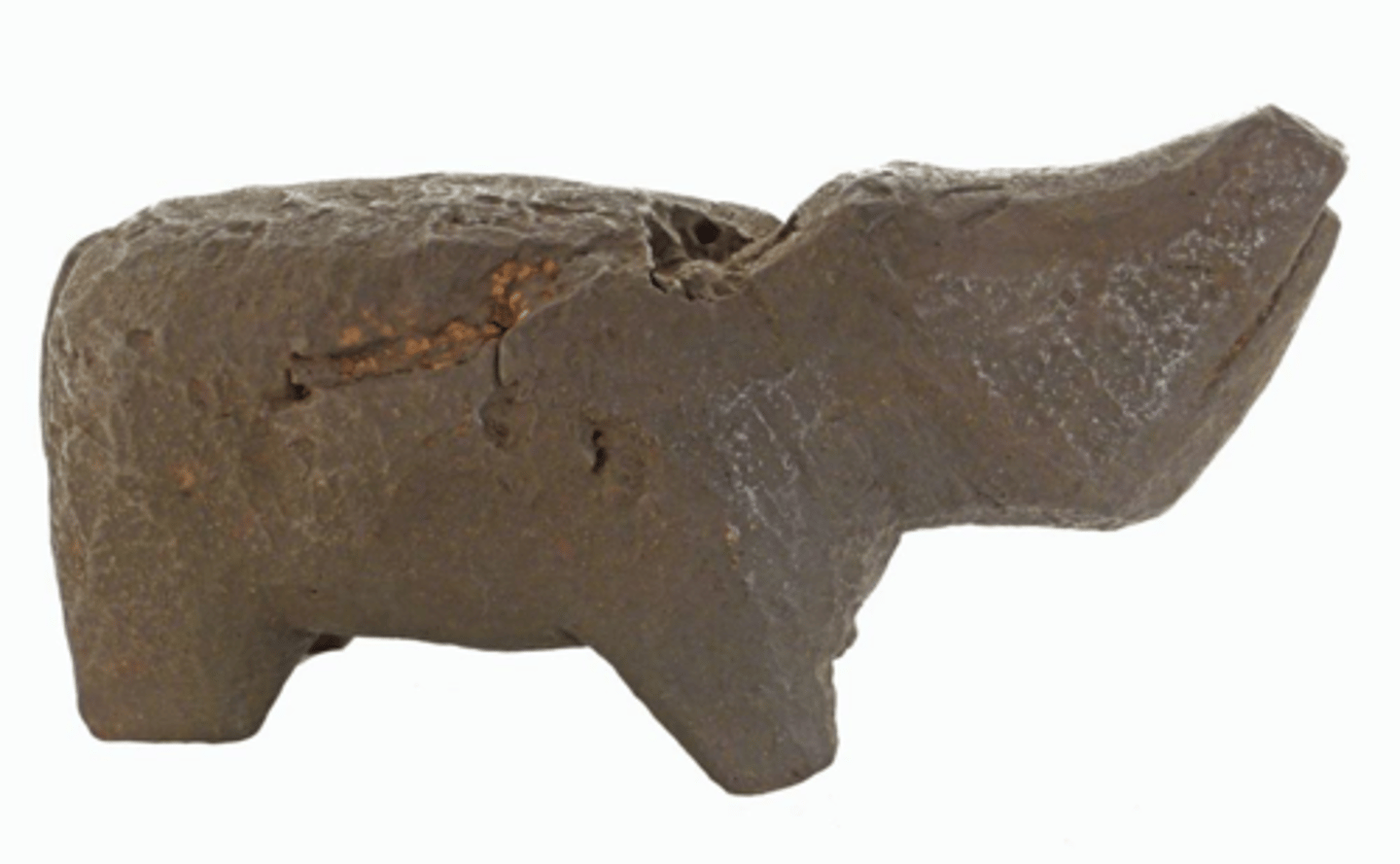
ukkil/okir
leaf-and-vine pattern motif associated with Mindanaoan woodcarving
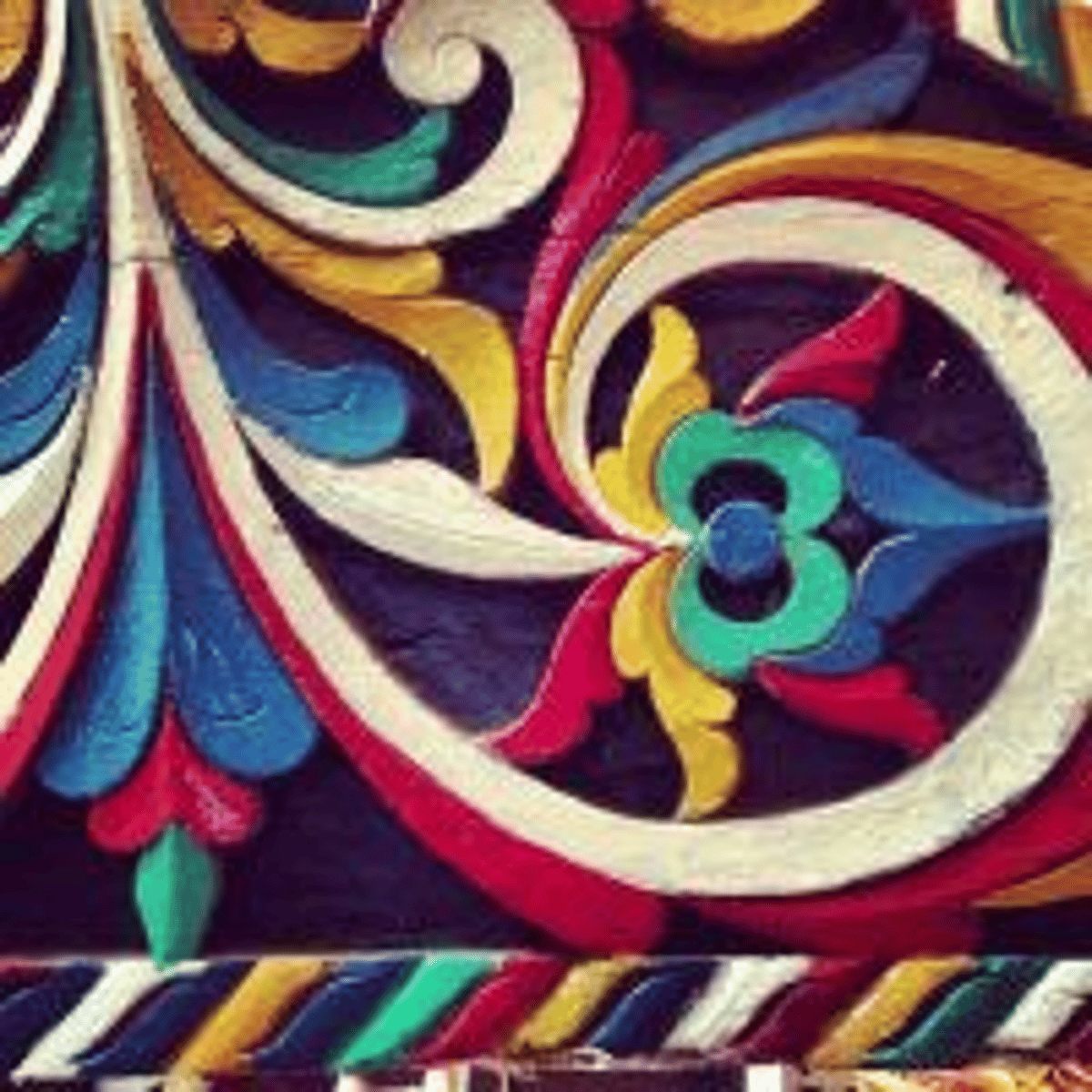
sarimanok
a bird or cock-form; symbol of a messenger
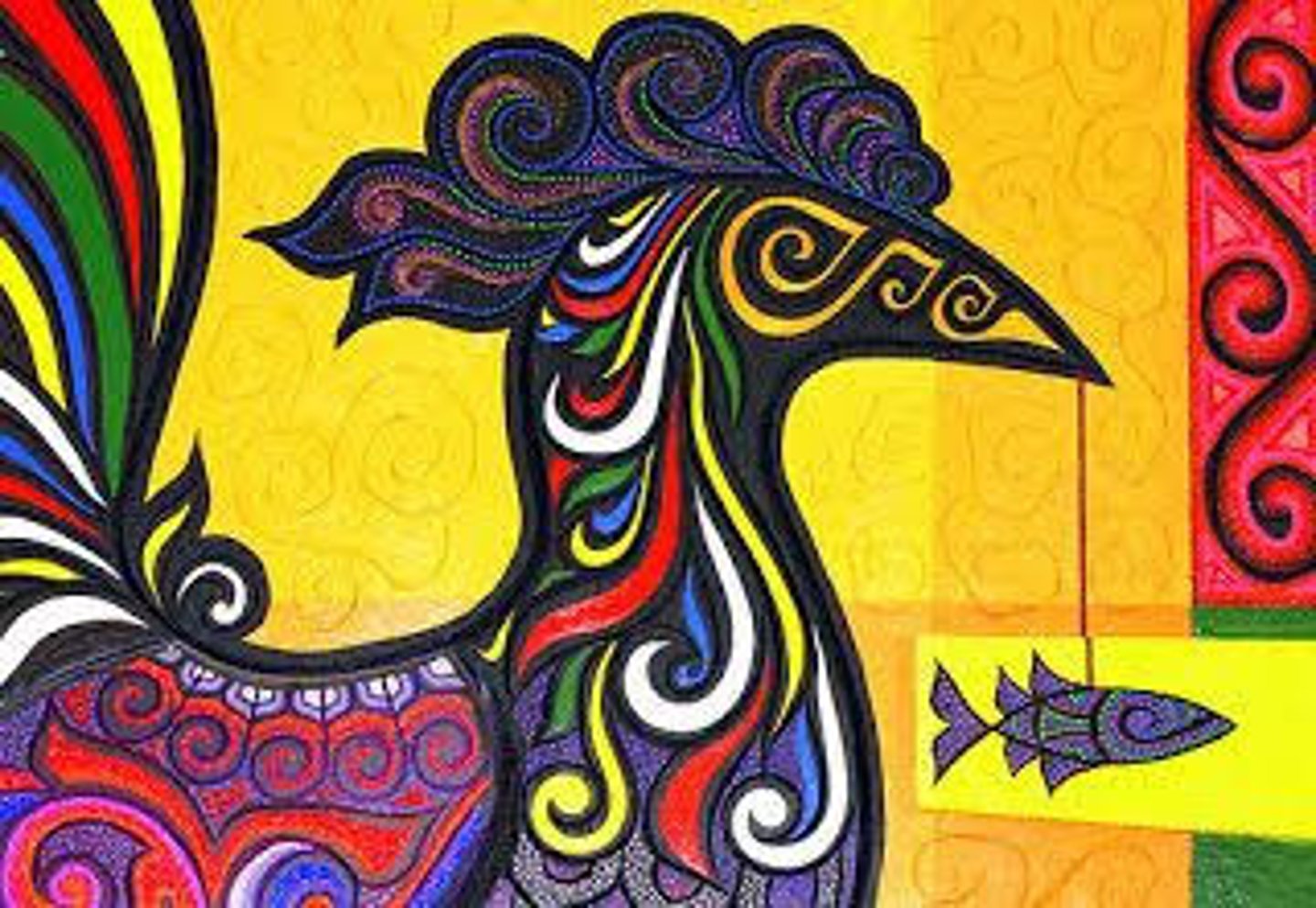
cave dwellings
in Angono, Rizal, evidence of cave dwellers exists in carved figures on cave walls, the earliest known Philippine mural
the Tabon Cave in Palawan is considered to have sheltered the earliest men of the Philippines
Cordillera Rice Terraces
2000 year old terraces that were carved intro the mountains of Ifugao
lean-to dwelling
A botanic windscreen with a windpole support
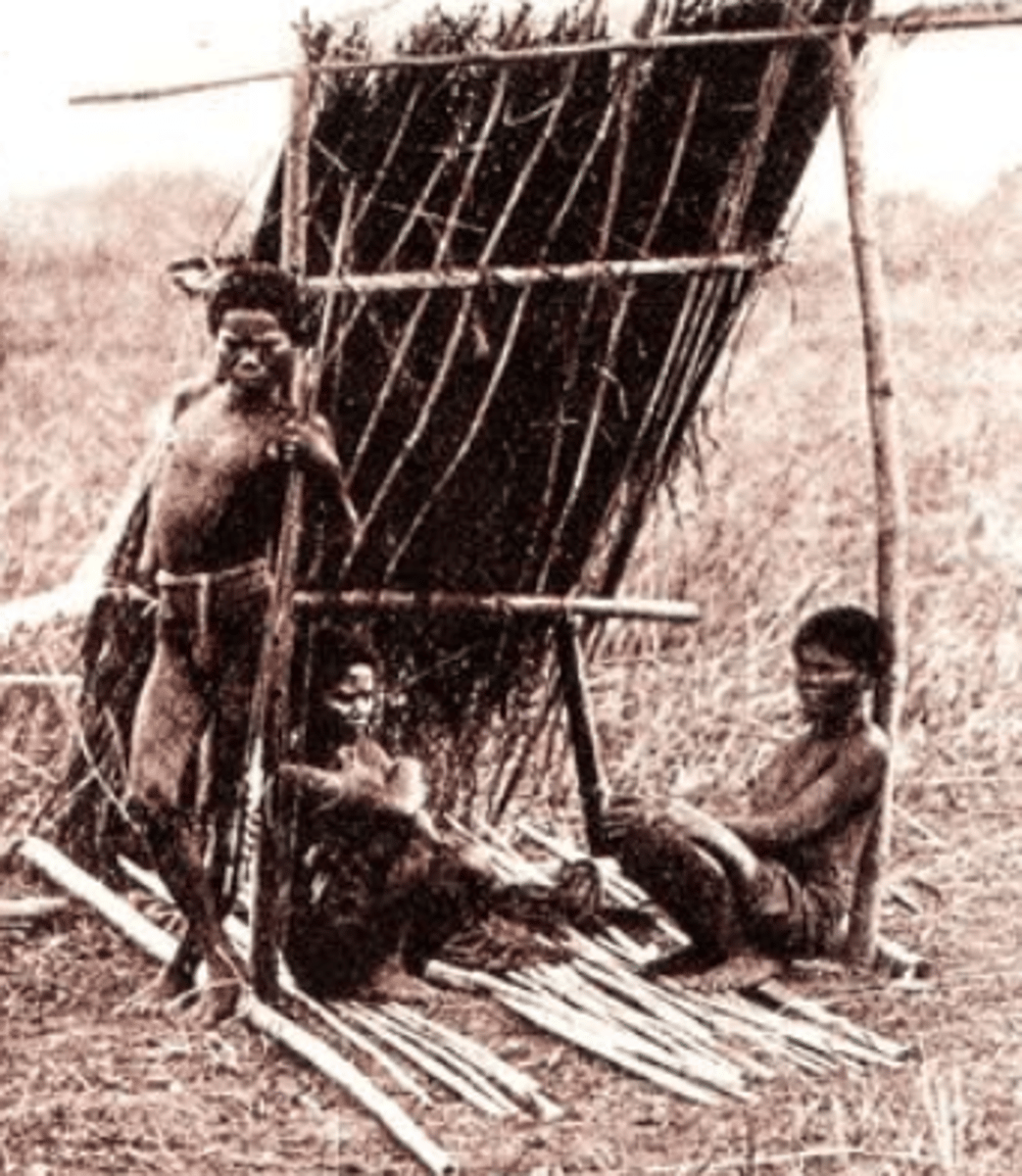
bahay kubo
Style of dwelling of the lowland areas that is comprised of a triangular roof, free-standing support and elevated house cube
balkon - front porch
bulwagan - multi-purposes main room
silid - bedroom
kitchen
batalan - roofless back porch; serves as cleaning area and wash room

rakuh
Ivatan traditional house of stone and mortar, 1 1/2 m thk stick cogon thatch roof and a big roof net "panpet" to protect its dwellers against strong rains and winds
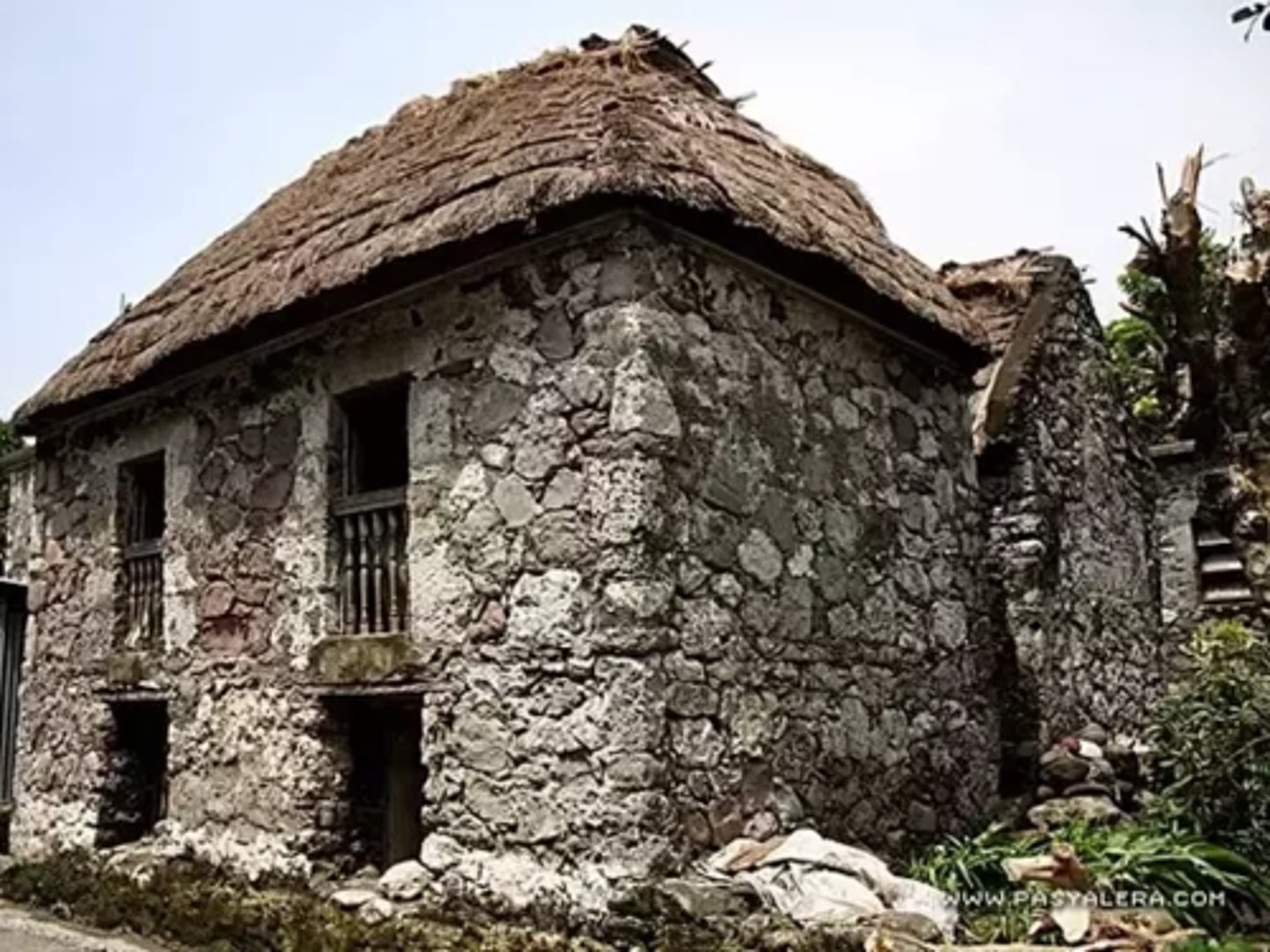
binuron
Isneg one room abode with a large concave roof that resembles an inverted traditional isneg boat

binayon
Kalinga octagonal house
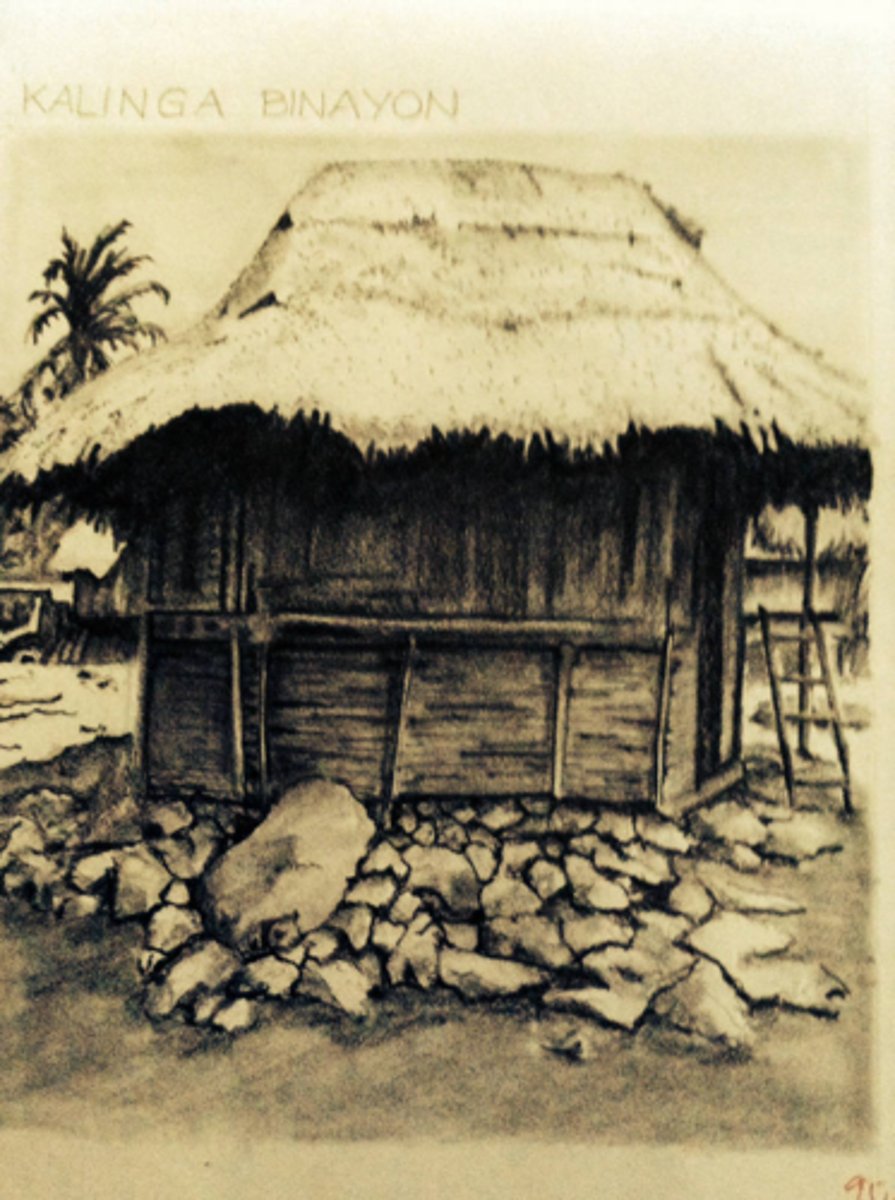
fale/vale
Ifugao house for the affluent whose pyramidal hipped roof covers the floor of the house
tukud - post
halipan - cylindrical rat guard
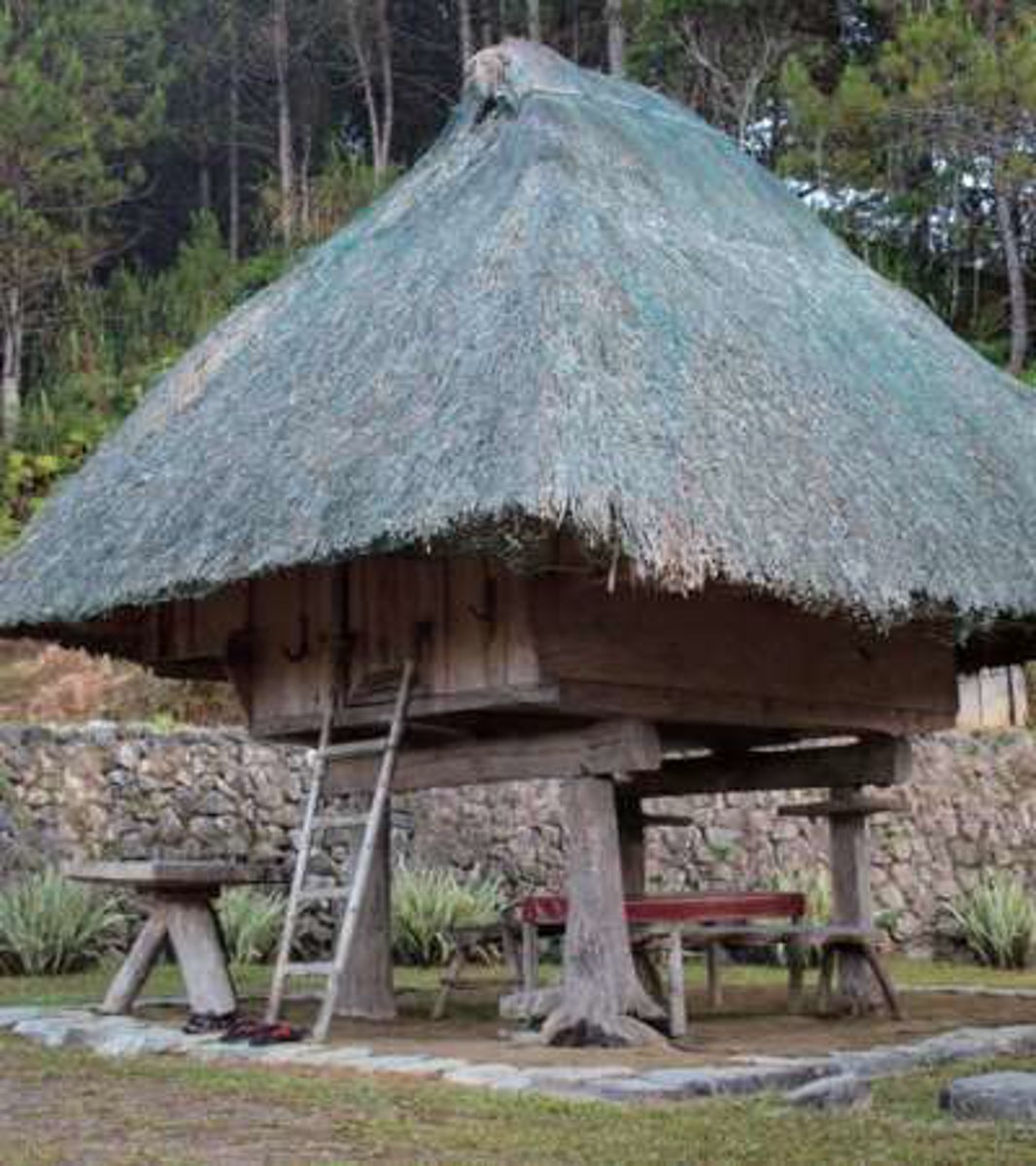
Badjao house boat
With a detachable a frame roof, and is supported by a "katig" that allows the boat to float steadily

bay sinug
Traditional tausug house on stilts supported by a pitched roof. It is distinguished by carved wooden finials tadjuk pasung placed on one or both ends of the roof
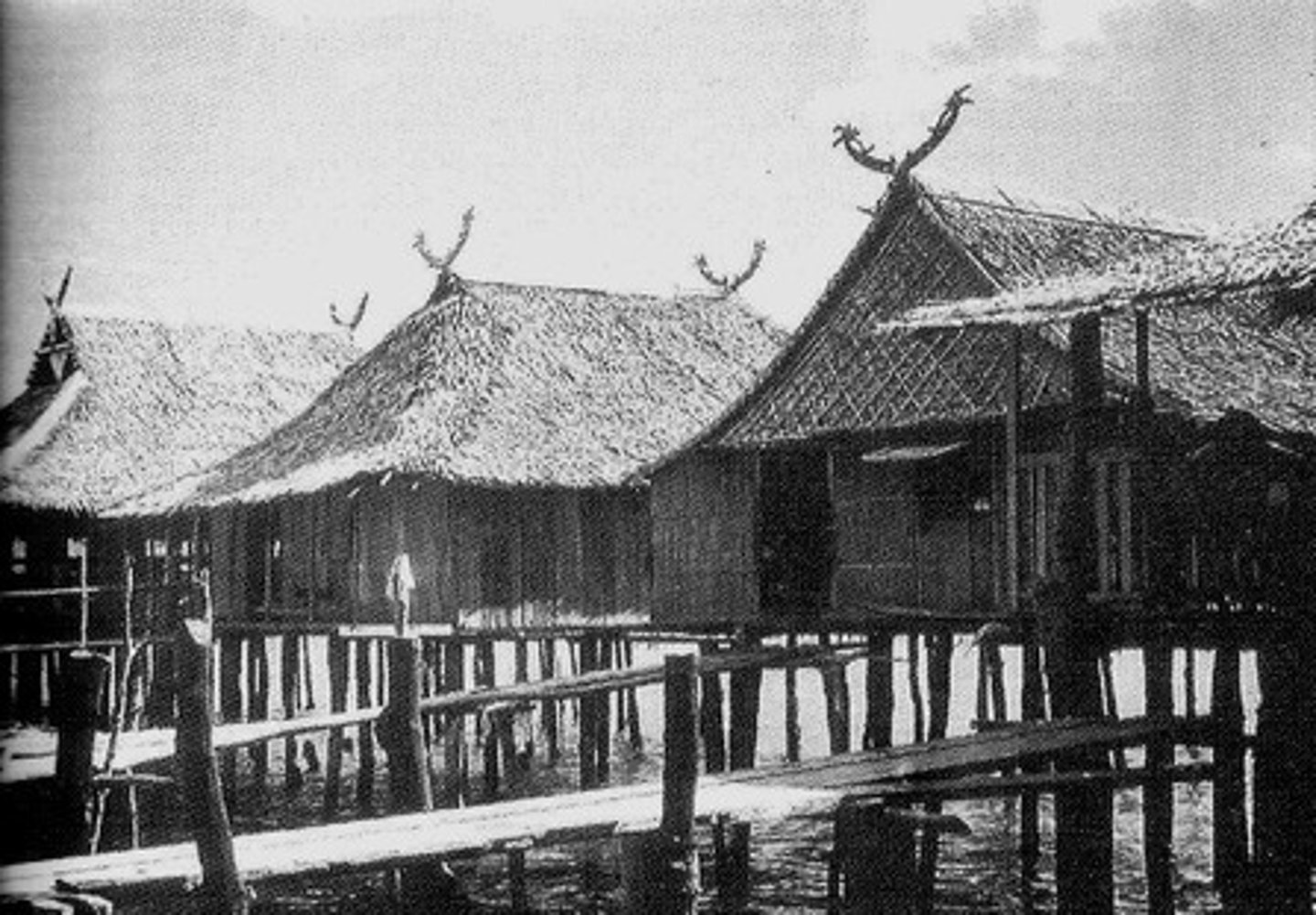
T'boli long house
Built on six foot stilts, generally about 50 feet long and nearly 30 feet wide, they are typically constructed of bamboo, wood, and palm fronds

Torogan
Sleeping place
the house of the sultan, known for its colorful "panolong" butterfly wing floor beam ends with a pako rabong (fern) or naga/dragon motif
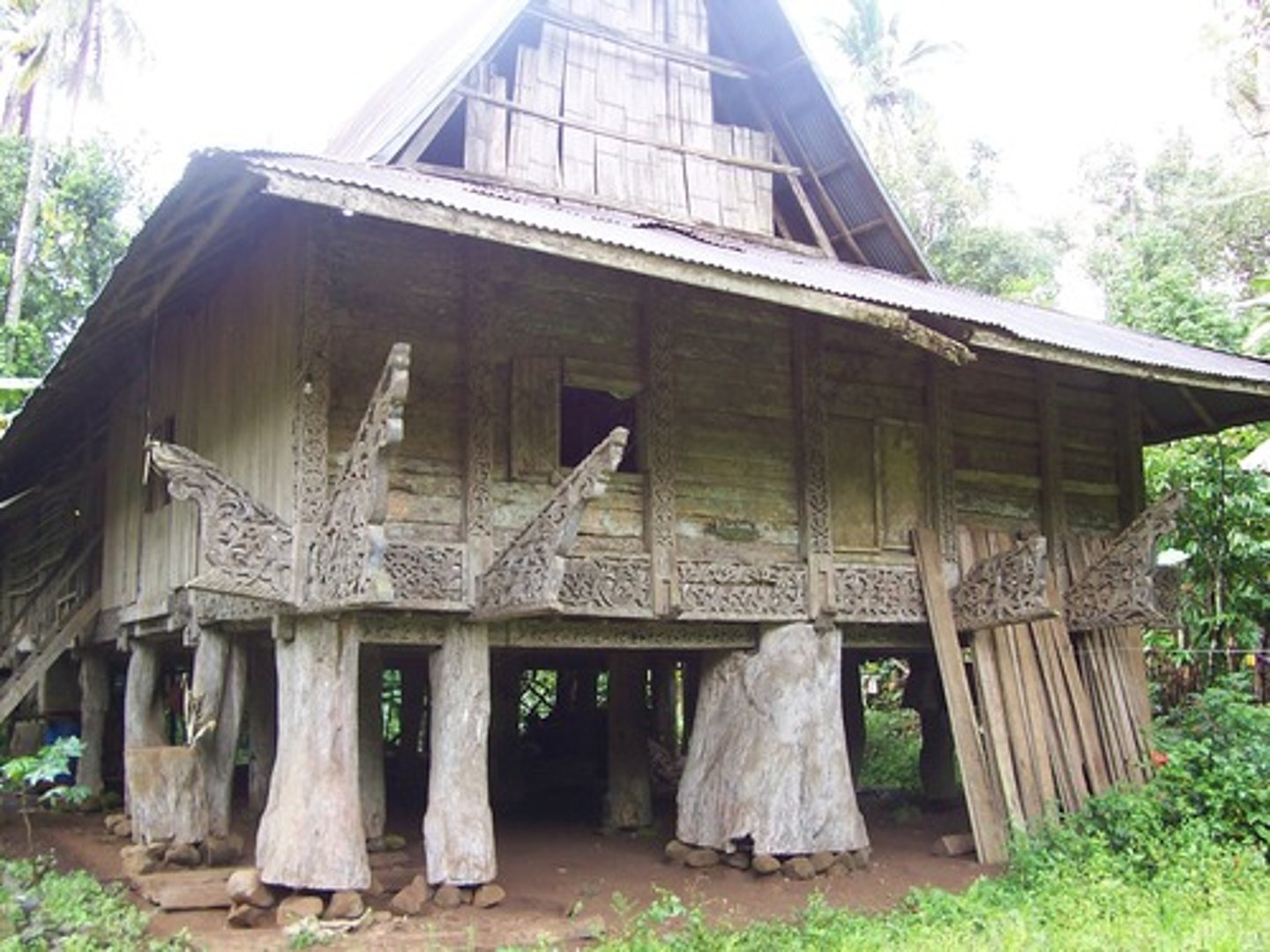
Naga
Sanskrit for dragon/serpent
Represents the cosmological model for wave or water
Langgal or Ranggar
"to meet"
can accommodate a small group of worshippers commonly built in rural areas

masjid or masked
A larger, more permanent structure that includes a dome and a minaret

Jose Luciano Dans
one of the earliest recorded painters in Philippine art history
painted the Langit, Lupa, Impierno - a three-level painting which shows the Holy Trinity, Mary the Mother of Christ, saints, and Seven Blessed Sacraments and a macabre depiction of hell

Damian Domingo y Gabor
most popular artist who worked in tipos del pais style. these watercolor paintings show the different types of inhabitants in the Philippines in their different native costumes that show their social status and occupation; opened the first fine arts school in the country in his house (Academia de Dibujo y Pintura)

Jose Honorato Lozano
Developed a style that combines both tipos del pais style and genre paintings by forming the letters of the patron's name from figures of people in local costumes doing everyday activities; also utilized landscape scenes as backgrounds
work: Letras y Figuras
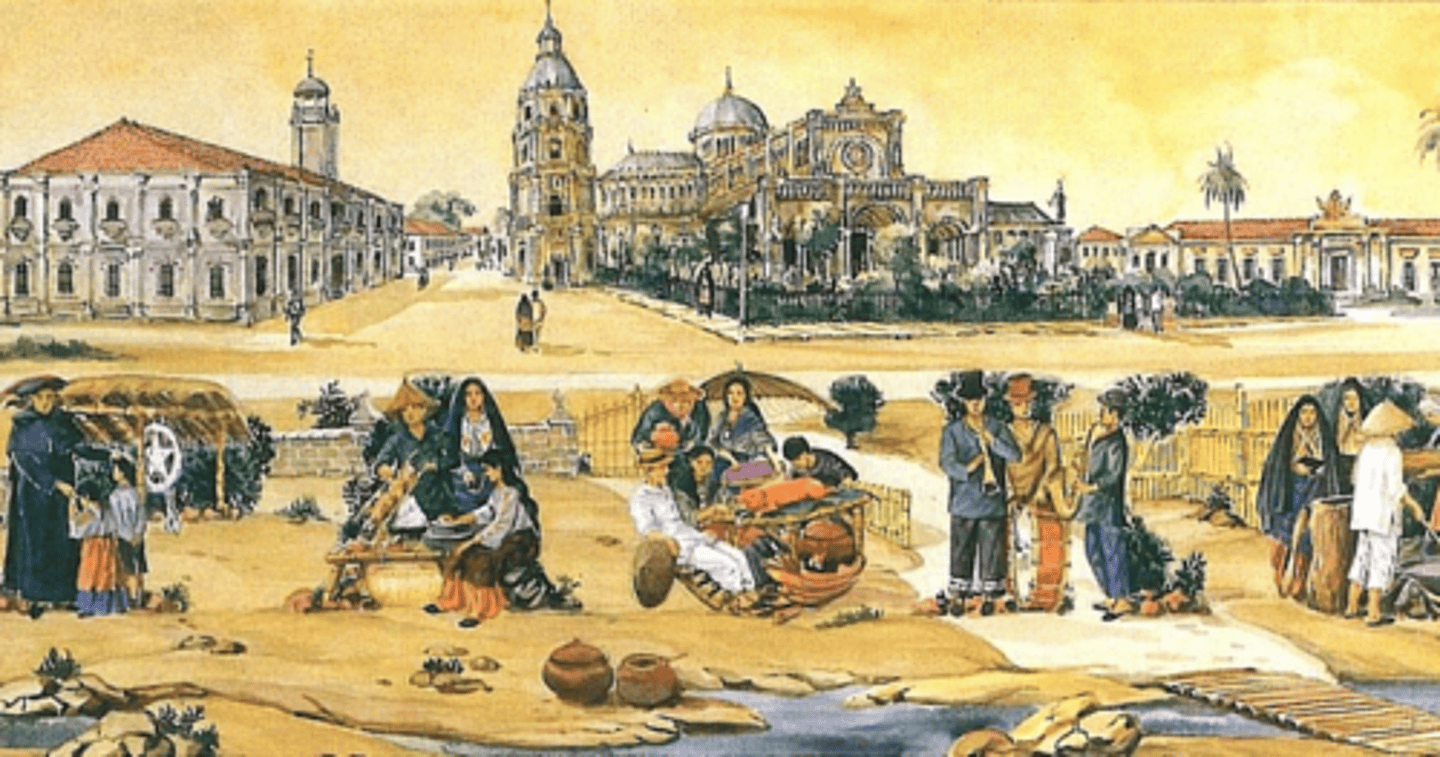
Juan Novicio Luna and Felix Resureccion Hidalgo
became the first international Filipino artists when they won the gold and silver medals in the 1884 Madrid Exposition
works: Spoliarium and Vigenes Cristianas Expuestas al Populacho

retablo
houses the tabernacle and the image of the town's patron saint
usually referred to as a "cabinet of saints"; one would see a hierarchy of saints depending on their importance to the townspeople
Mexican for "behind the altar"
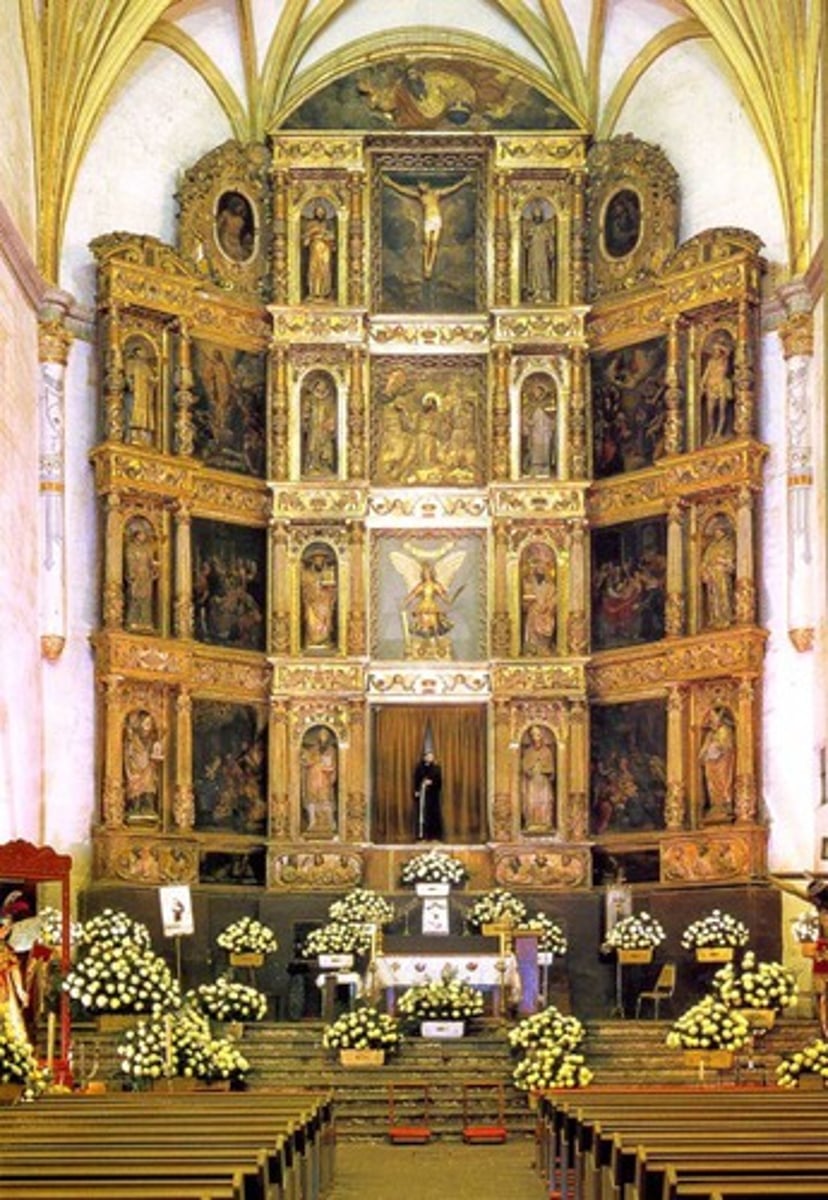
relleves
Carved images in relief
usually depict the Via Crucis; it may also show holy images in religious scenes

santos
religious images
encarnacion
enliven (bring to life)
drips of blood, etc.
bastidor santo
A mannequin type intended to be dressed with clothing and accessories
miniaturismo
very intricate painting of small details
Simon Flores
Juan de los Santos
Earliest known sculptor in the Philippines.
Isabelo Tampinco
Manila Cathedral's facade; high relief at Sto. Domingo Church's molave door; Laoag Cathedral's main door; San Agustin Church carvings
La Doctrina Christiana en la Lengua Espanola y Tagala
The Christian Doctrine in the Spanish and Tagalog Language
the first book printed in the country published by the Dominicans in 1593
on it was a woodcut engraving of St. Dominic by Juan de Veyra, a Chinese convert
Estampas and Estampitas
Prints of miraculous images usually featured portraits of saints and religious scenes.
reduccion
The grouping and reduction in number of formerly scattered barangays into compact and larger communities to facilitate religious conversion and cultural change.
plaza complex
A kind of town planning in which the fort and the church were integrated centrally and concentrically with the social classes
bahay na bato
"stone house"
an evolved bahay kubo with improved air circulation and lighting
accessoria
Apartment dwellings; single or two-storey structures having multiple units defined by common party walls shared by adjoining units separated door at the facade.
tribunas
a screened gallery with entry from the second floor of the convent
convento
parish house or rectory
Minor Basilica of the Immaculate Concepcion
The Roman Catholic Minor Basilica in the capital of the Philippines. Distinguished by its Romanesque Style.
aka Manila Cathedral

Laoag Church
By Fr. Joseph Ruiz, known for its sinking bell tower.
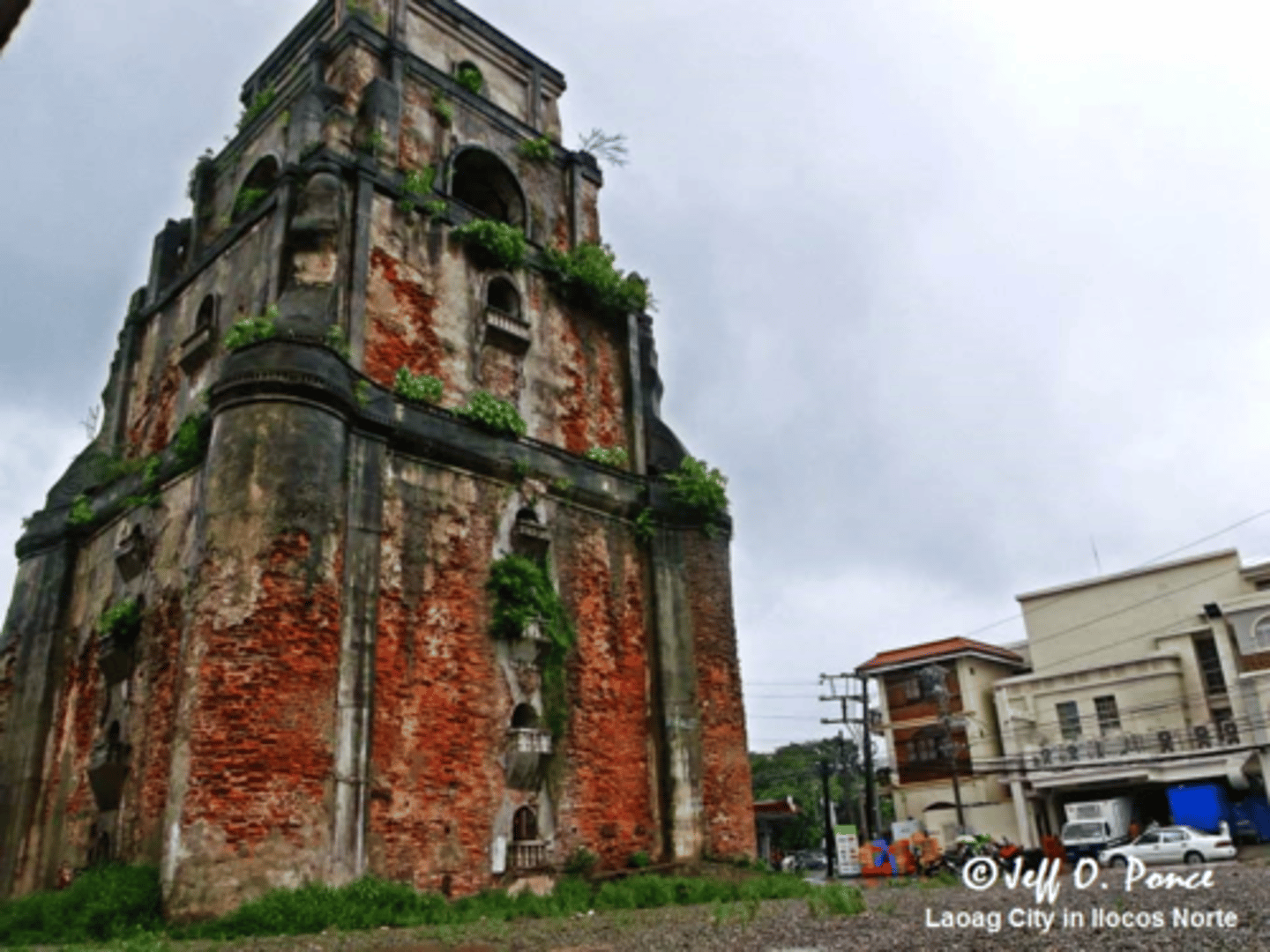
Paoay Church
largest bell, probably the best known earthquake baroque church in the Philippines; distinguished by its enormous side buttresses with scroll-like bases
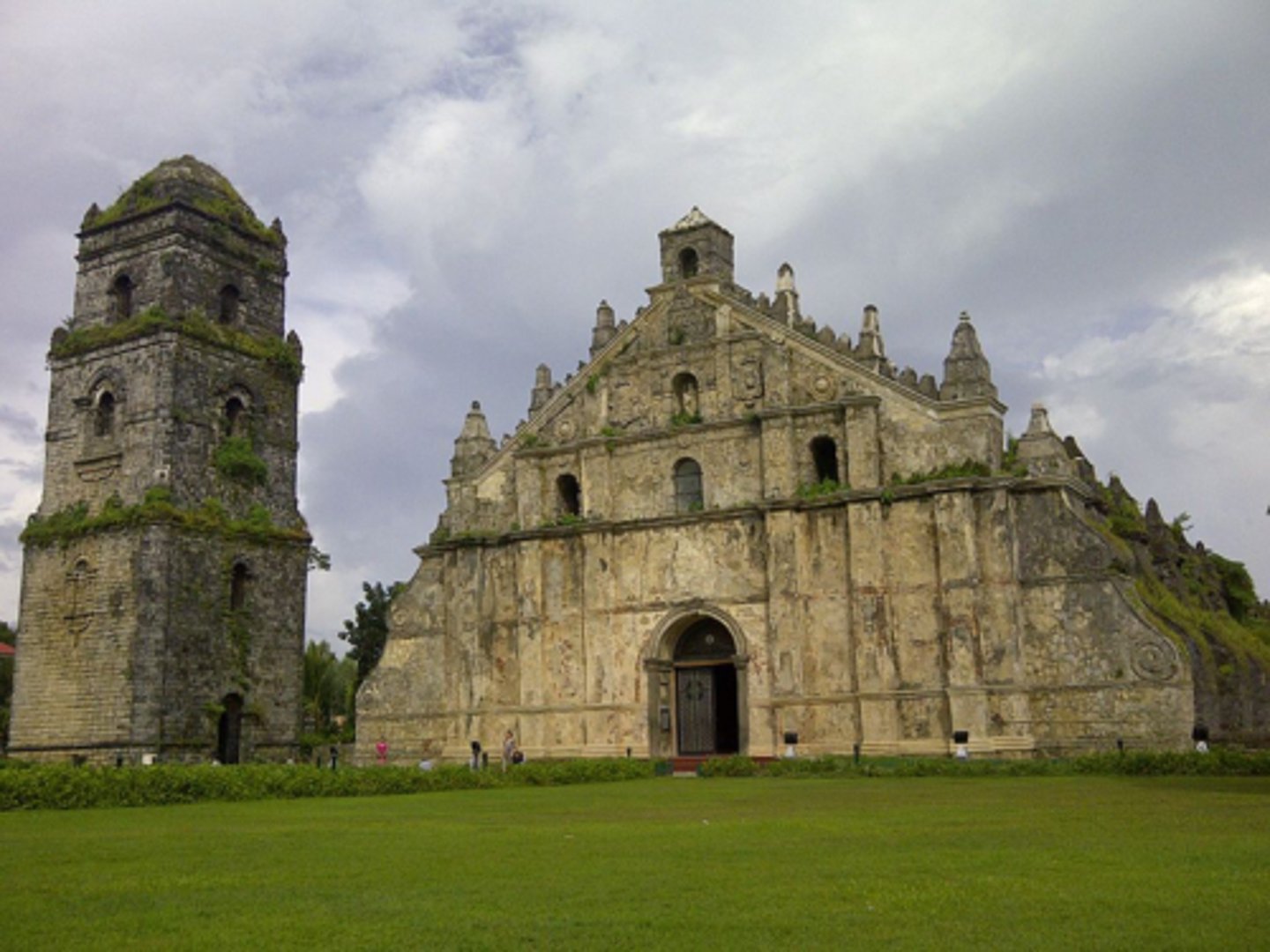
Quiapo Church
its current design was the work of Juan Nakpil and Jose Maria Zaragoza
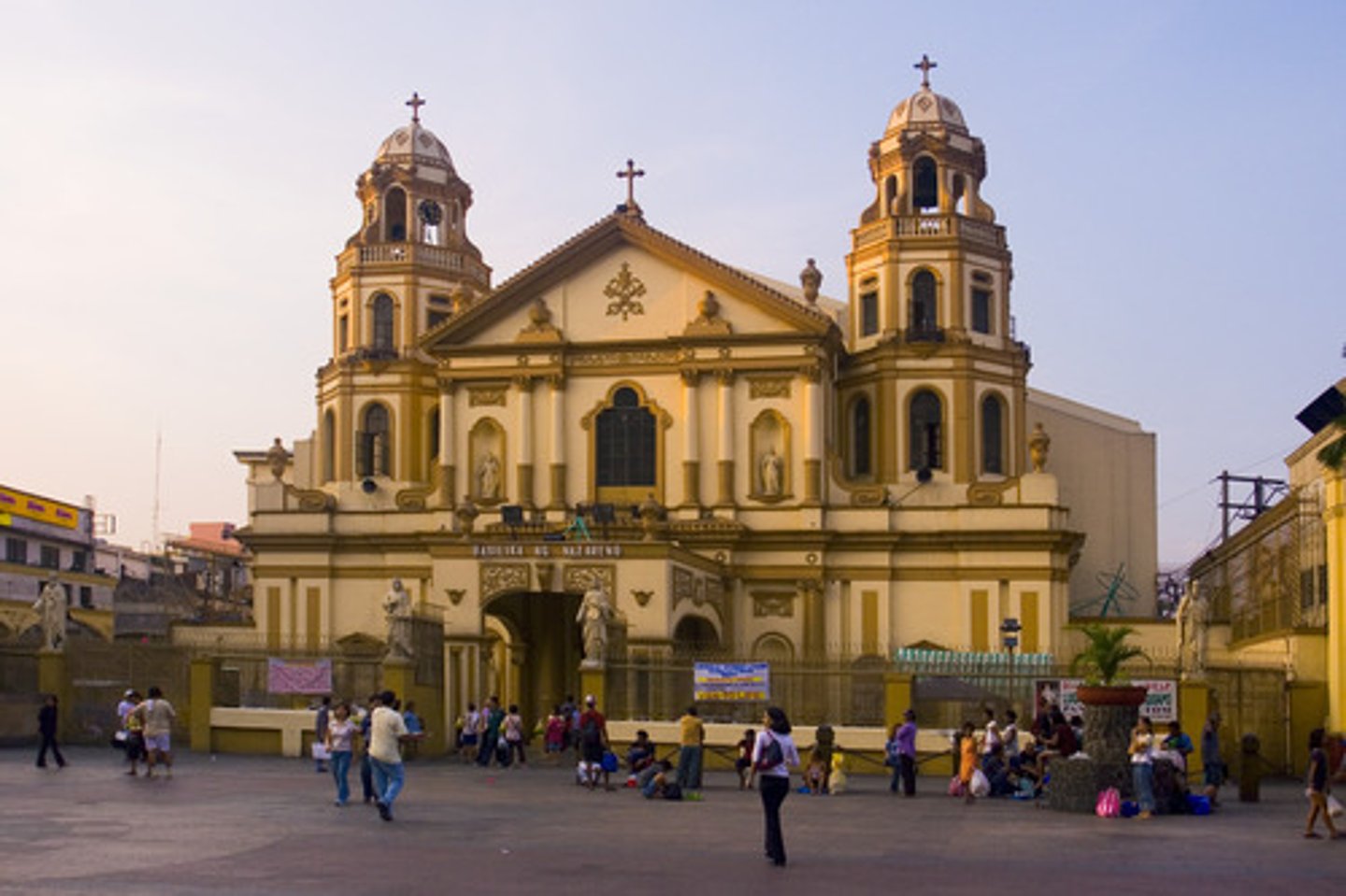
San Agustin Church
By Fr. Juan Macias, the first religious structure built in the island of Luzon; the only stone church of its size that is still standing as initially built. Also one of the very few built with true barrel vaulting.
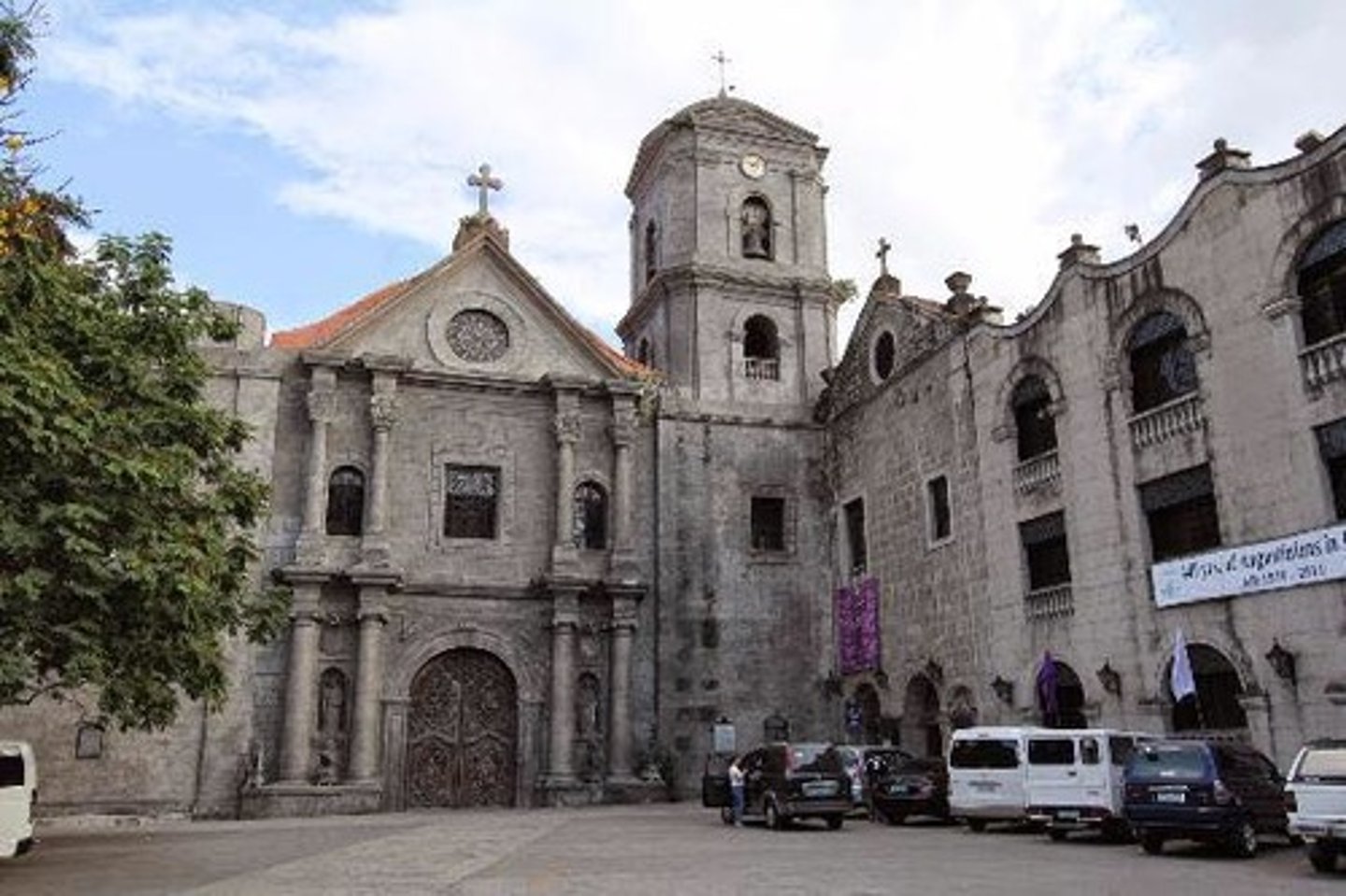
San Sebastian Church
supposedly by Gustav Eiffel
one of the first steel buldings; only gothic church

Taal Church
By Fr. Martin Aguirre, the biggest Spanish church in the country in terms of size and floor area

Miag-ao Church
unusual Aztec like bas-relief in the facade depicting St. Christopher carrying the baby Jesus through a tropical forest
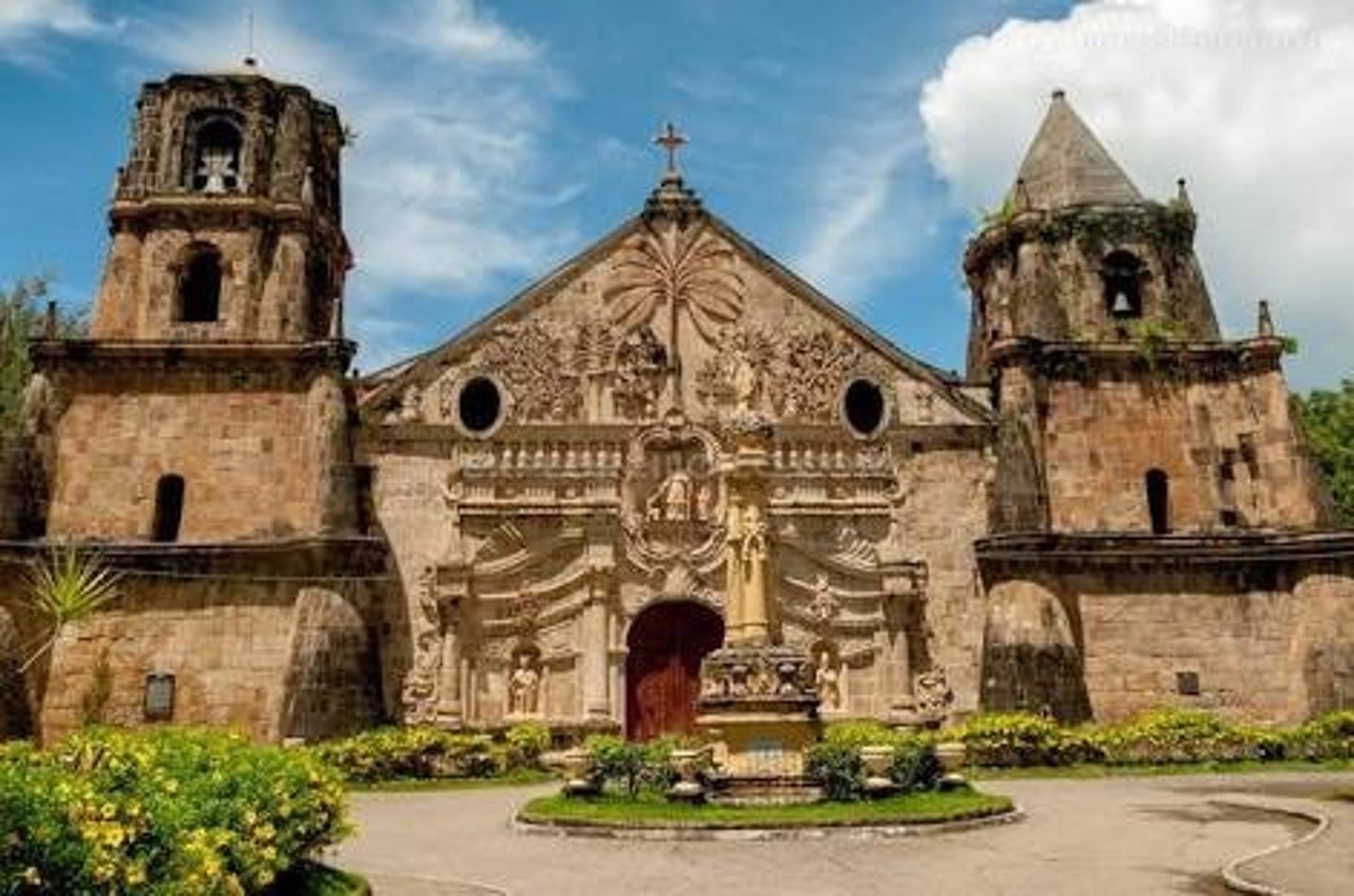
Fort San Pedro, Cebu
The first fort in the country
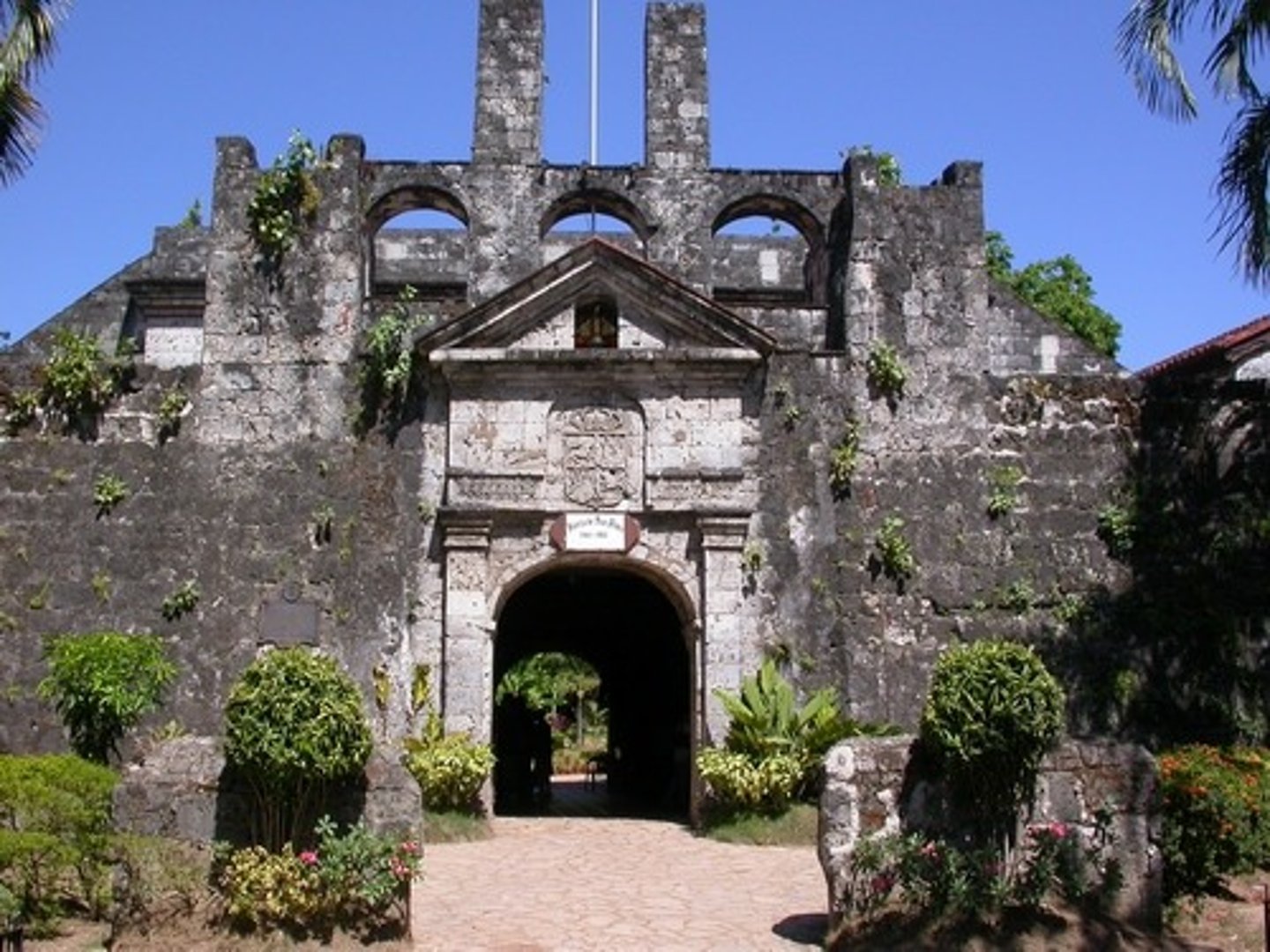
Nuestra Senora de Guia
the first stone fort in the country

Fort Santiago
Fort named after the patron saint of Spain, it was built at a sharp angle between a river and a bay, it formed a citadel.
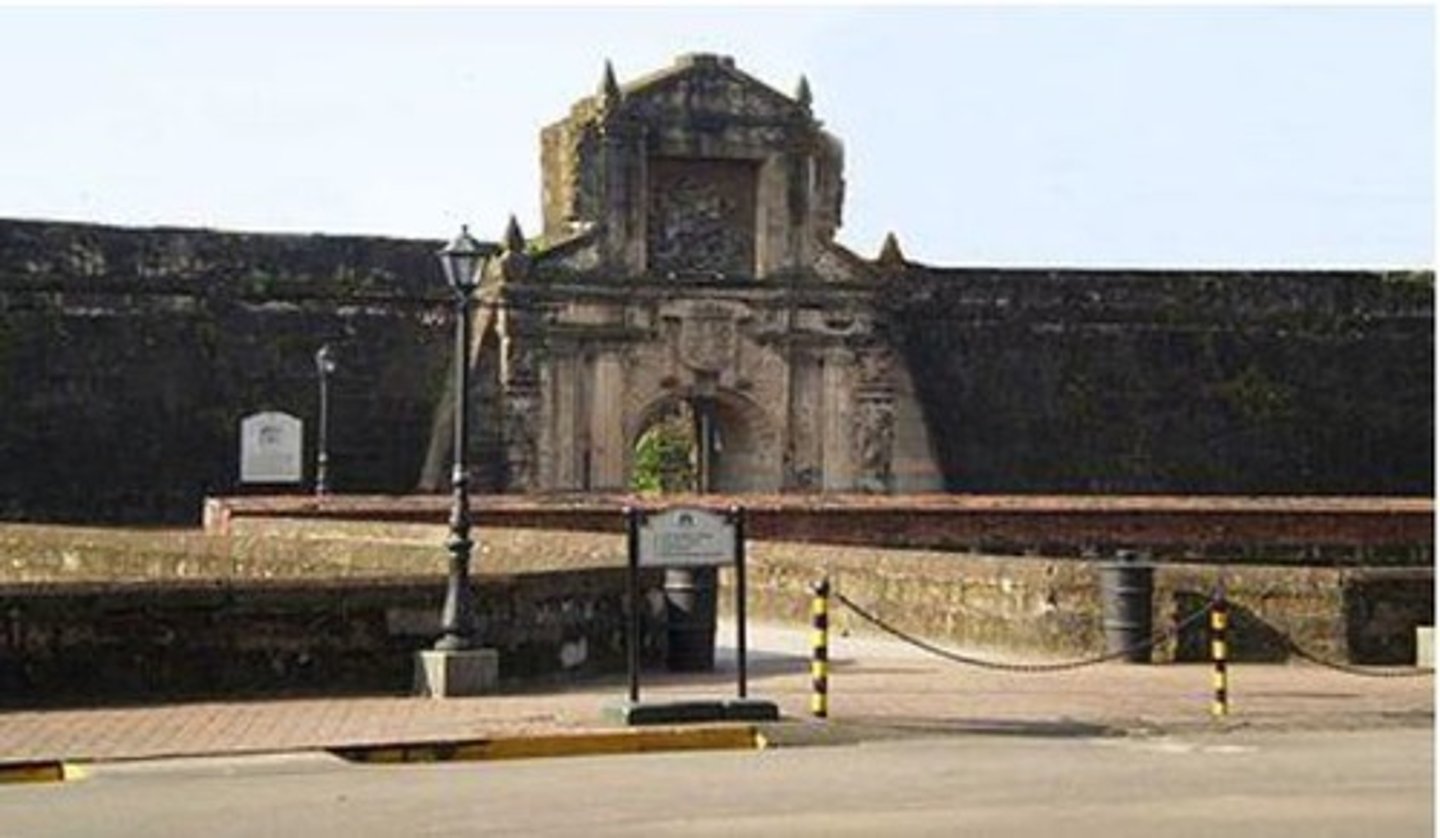
Palacio de Gobierno/Palacio Real
Residence of the highest official of the land
Ayuntamiento
the seat of colonial governance in the country (executive, legislative, judiciary)
aduada
customs house; imports
minicipio/casa de municipal/casa real
smaller version of the ayuntamiento in provincial towns; its design looks like an oversized bahay na bato
casa hacienda
Housed the administration of the hacienda
farola
lighthouse
Fabian dela Rosa
First notable painter of the 20th century. Realistic portraits, genre and landscape in subdued colors. First dean of UP Fine Arts.
works: rice planters
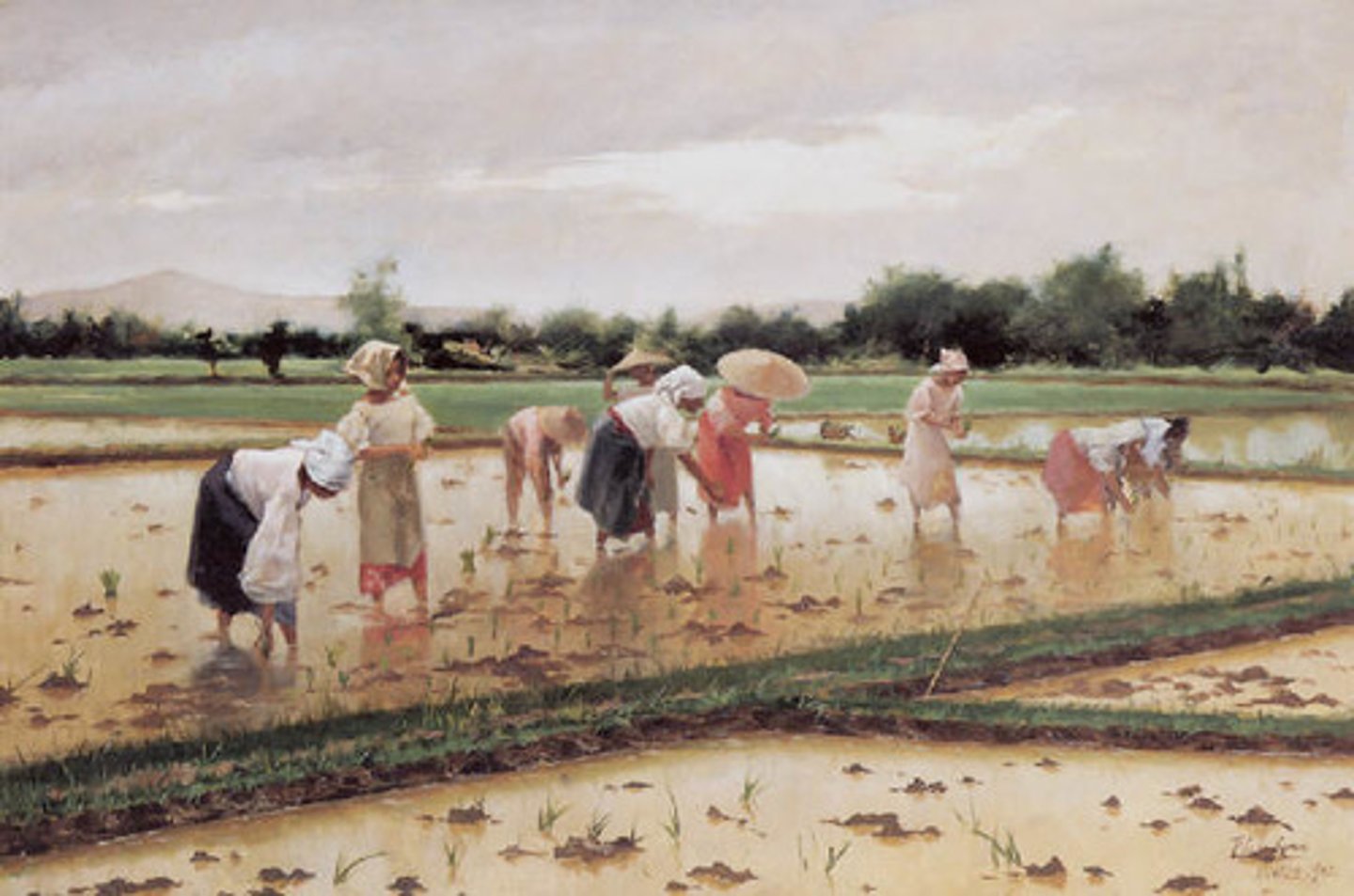
Fernando Amorsolo y Cueto
(1892-1972) A student of Fabian dela Rosa, he is the first and among the few Filipino painter who have captured the different striking colors and character of the country's magnificent sunlight.
Works: Dalagang Bukid, Planting Rice

Guillermo Tolentino
Trained in the classical style in Rome.
works: Oblation, Bonifacio Monument (Caloocan), Filipinas in Bondage
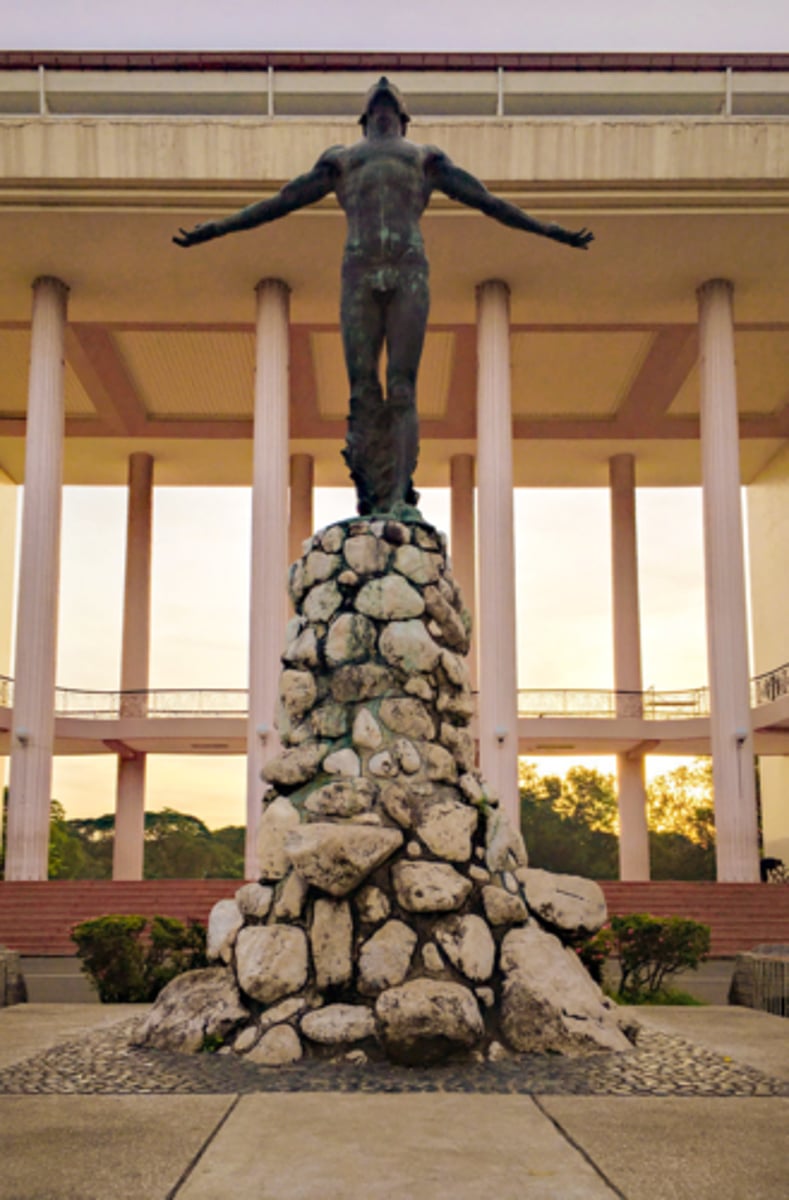
beaux arts
a grandiose architectural style as taught at the ecole des beaux arts in Paris
the style is elaborate, historic, and eclectic architecture, designed on a monumental scale, based on classical architecture on Hellenic Greece and Imperial Rome; that adapted features of French architecture of the 16th-18th C
chalet
A single-storey raised slightly above the ground, constructed in reinforced concrete and wood; with an extended veranda in front.
The Burnham Plan
by Daniel H. Burnham, the father of the City Beautiful movement; was commissioned to design master plans for Manila and Baguio
1st generation architects
Filipino architects who were sponsored by colonial officials to study architecture and engineering in the US
"pensionados"
William Parsons
works: Philippine General Hospital main building; UP University Hall at Padre Faura; the Manila Hotel
Juan Arellano
was sent to the US as one of the first pensionados in architecture
works: UP Palma Hall, UP Benitez Hall, UP Malcolm Hall, The Legislative Building, Manila Post Office, Metropolitan Theatre
Antonio Toledo
consulting architect in 1938-1954
one of the pioneer professors in Mapua Institute of Technology
works: Manila City Hall; Bureau of Customs
Tomas Mapua
holds the distinction of being the first registered architect of the Philippines ("uno")
founded Mapua Institute of Technology
founded the first architectural association in the Philippines, the Philippine Institute of Architects
works: De La Salle College; CEU; MIT
2nd generation architects
emerged in the late 1920s and 30s and introduced Art Deco characterized by exuberant exoticism and ornamentation
Juan Nakpil
the eldest child of Philippine revolution veterans Julio Nakpil and Gregoria de Jesus
1st national artist for architecture
works: Arellano University Building; UP Admin and Library Buildings
Andres Luna de San Pedro
son of the famous 19th century expatriate Filipino painter Juan Luna; introduced new architectural forms in the Philippines by using art nouveau style
The Crystal Arcade
forerunner of the mall; remarkable use of glass as its main component; Regina Building
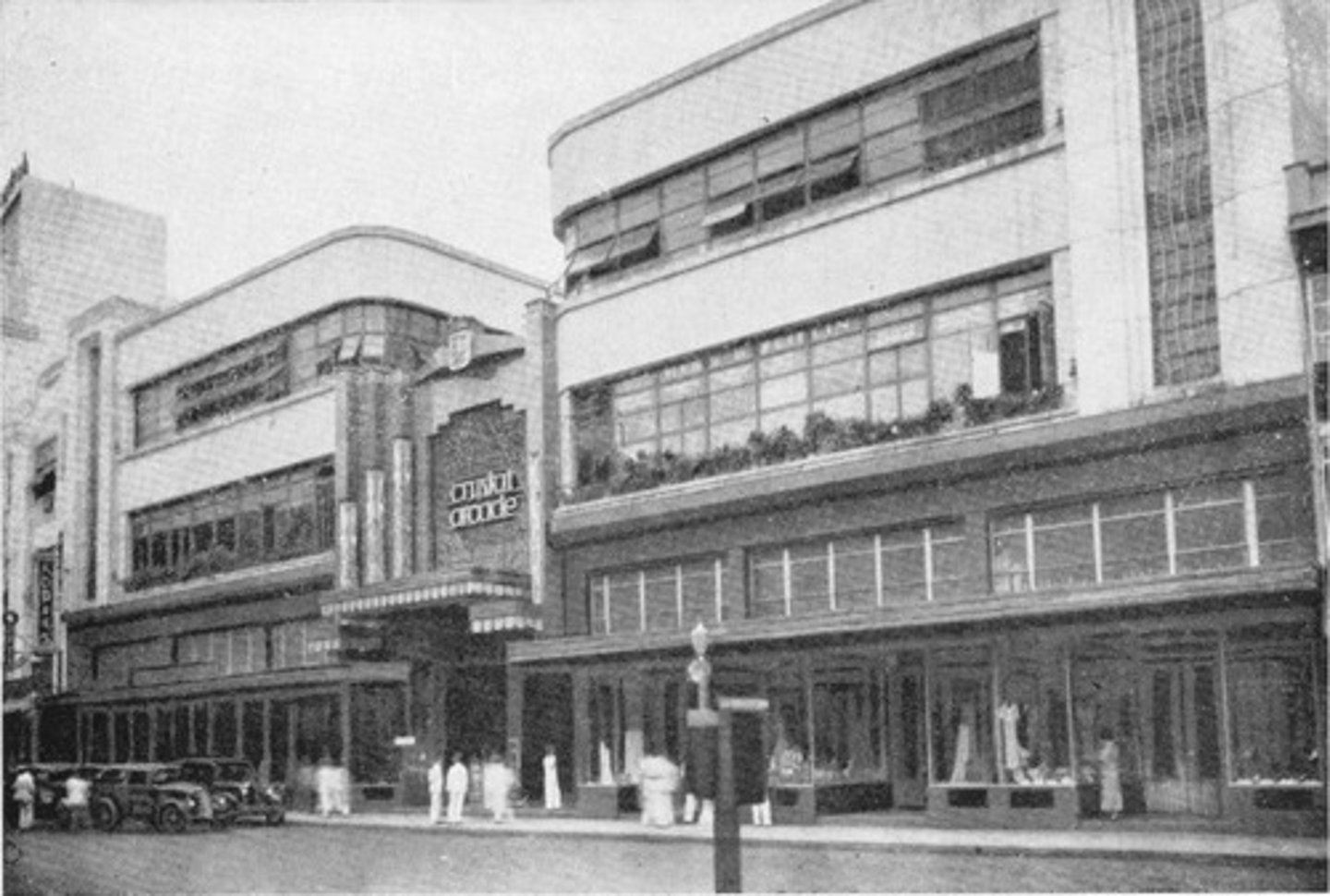
Pablo Antonio
2nd National Artist for Architecture
works: Boulevard Alhambra (now Bel-Air apartments); FEU; Ideal Theatre; Manila Polo Club
Fernando Ocampo
works: Angela Apartments; UST chapel
Modern Period in the Philippines
in the 1920s, several young painters were starting to question the Amorsolo school style that became the standard for painting
wanting to veer away from the aesthetic standards, they strove to develop new idioms in expressing themselves
Victorio Edades, Carlos Botong Francisco, Galo Ocampo
Triumvirate of Philippine Modern Art
Victorio C. Edades
Father of Philippine Modern Art.
works: The Artist/The Sketch, The Builders

Galo B. Ocampo
with his "Brown Madonna", Filipinized Western canonical iconography
works: deposition

Carlos "Botong" Francisco
Angono-based painter; depicted Philippine history in his "History of Manila" mural at the Manila City Hall
his trademark fluid lines and brilliant colors filled up the entire pictorial space of the mural, defying the rules of linear perspective set by the local academy
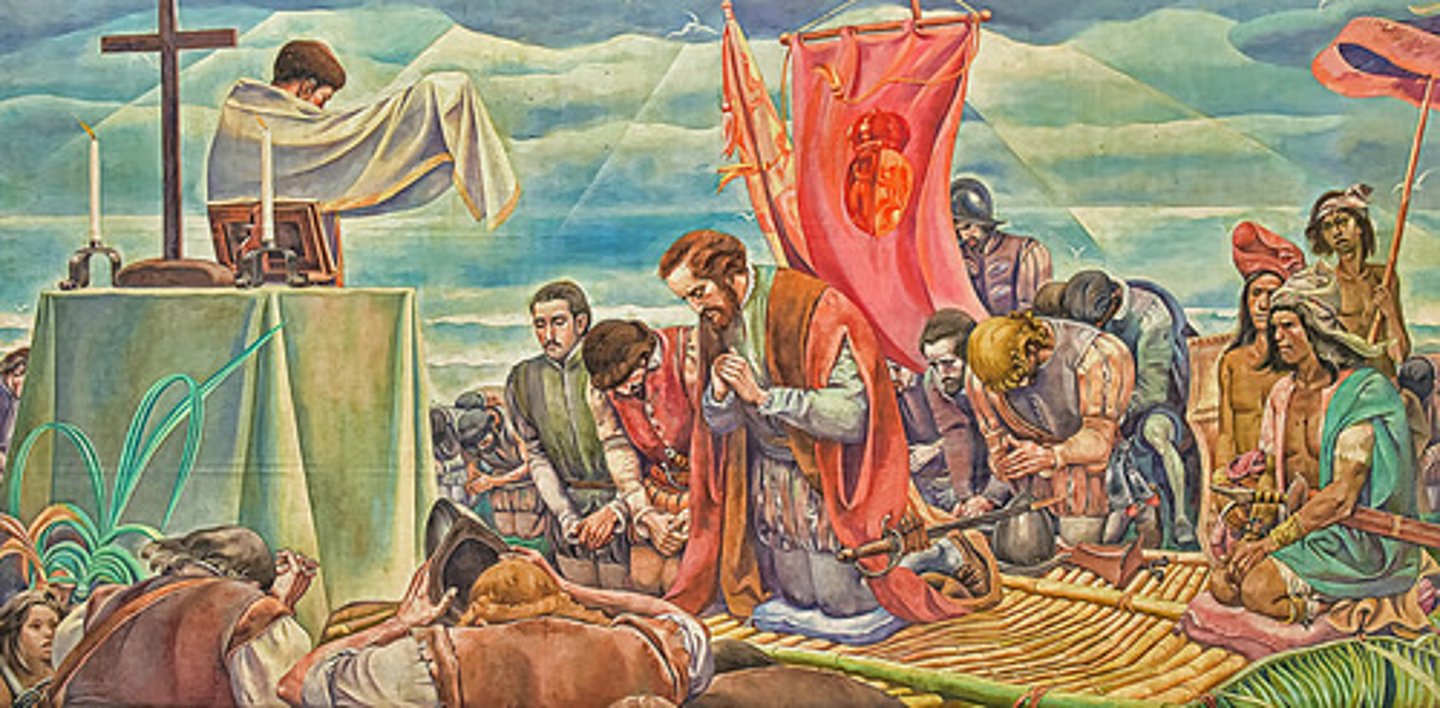
Thirteen Moderns
A group of artists who were reacting to the academic style of Luna and Hidalgo and to the sweet style of Amorsolo.
Diosdado Lorenzo
Hernando Ocampo
Vicente Manansala
Cesar Legaspi
Demetrio Diego
Bonifacio Cristobal
Jose Padro
Arsenio Capili
Ricarte Purugganan
Anita Magsaysay-Ho
Vicente Manansala
(1910-1981) Considered as the major proponent of Cubism in the country.
works: Jeepneys; 14 stations of the cross in the UP chapel; Madonna of the Slums
